#bl history
Explore tagged Tumblr posts
Text



more Cool-B covers featuring DRAMAtical Murder
66 notes
·
View notes
Text
Behind the blue shorts: How an all-boys Catholic school sparked the origination of Thai BL
(Cross-post from Reddit)
One evening this past July in Bangkok's long-time youth hangout of Siam Square, a crowd was gathering in the street, around an area set aside for busking musicians. The mostly young-adult female audience politely applauded as several high school bands took turns performing, but they were actually waiting for a different act. After some time, the crowd began to stir as members caught sight of some two dozen teenaged boys, all in a uniform of white shirts and bright royal blue shorts, headed towards the gathering. As they filed out onto the makeshift stage area, the boys were loudly greeted with passionate, enthusiastic screams, all too characteristic of fans cheering on their idols.
But these boys weren't actual idols - not yet, at least. They were all brand new actors, yet to appear on screen anywhere. They were the cast of Love Sick 2024, an upcoming remake of the pioneering Thai BL series whose tenth anniversary they were celebrating that day, in one of their first public appearances.
Why, then, would such inexperienced newcomers inspire such fervent devotion?

The Love Sick 2024 boys (and three girls) with their audience (Tia51)
Well, for starters, the original Love Sick series is a quintessential classic of Thai BL, arguably the one pivotal work that kick-started the entire TV genre - which in the decade since has developed into an industry worth multi-millions and recognized as a major cultural export. It still holds a place close to many long-time fans' hearts, and BL, like other phenomena of fandom culture, has been known to elicit very enthusiastic emotional responses from followers.
But the scenes witnessed with Love Sick 2024's actors are actually quite reminiscent of those previously seen during the original's release, when BL series didn't yet even exist as a category. Surely, there must be something else underlying this series' - and its actors' - popularity.
Let's take a closer look.
Love Sick's real-life inspiration
In chapter 21 of the original Love Sick novel, Noh, having taken delivery of the music club's new set of drums and overseen band practice for the evening, spends some time sitting around on the stands along the sports pitch next to the F. Building, wondering how he's going to pay for them. It's not long before Earn shows up to rescue him from his financial troubles, but let's pay attention to the location.
The F. Building Noh mentioned is an actual place - F. Hilaire Building at Assumption College (AC) in Bangkok. It is named after Frère (Brother) Hilaire, one of five French missionary teachers of the Catholic Brothers of St. Gabriel who arrived in Siam in 1901.
In the late 19th century, Siam (Thailand's historical name) was rapidly modernizing in response to colonial pressures. American Protestant and French Roman Catholic missionaries played a large role introducing technological and medical advances, and also established some of the first schools in the country as the royal government introduced reforms to formalize the education system. Father Émile August Colombet, the head priest of what was then Assumption Church, founded Assumption College as a school for boys in 1885, and after a decade of growth, the Brothers were invited to help run the school. A convent school for girls, run by the Sisters of St. Paul of Chartres, was established next door soon after.
While the early government schools mostly served the aristocracy, the missionary schools catered more to the general populace, especially the minority ethnic groups who also formed the majority of their congregations. However, while they are remembered today for their legacy of modernization, the missionaries had relatively little success proselytizing, and the large majority of their students remained Buddhist.
Over time, these schools expanded and grew. The St. Gabriel's Foundation now operates over a dozen schools, as well as a university, and Assumption College is regarded as one of the most elite private schools in the country. Its lengthy list of famous alumni includes names from several of Thailand's biggest business families, as well as major political figures, demonstrating its historic stature and the strength of its alumni network. Today, the stereotypical image of its students is of those coming from wealthy or upper middle-class families of Chinese descent, and hefty donations are the norm for families looking to secure placement for their sons.

AC student Keen (Only Boo!) giving a presentation in 2022 on his team's experience joining a NASA-sponsored CanSat (miniature suborbital satellite) competition. It's not like every school has an aerospace program. (Assumption College, via Workpoint Today)
Brother Hilaire, barely 20 when he arrived in Siam, spent his next 67 years dedicated to the school. He learned Thai well enough to write the foundational Thai textbook series Darunsueksa, which remains in use over a century later. Along with Father Colombet, he is memorialized as one of the school's two most celebrated figures.
Today, the building which bears his name overlooks the school's central courtyard, an assembly ground of red brick facing the apse of Assumption Cathedral, an imposing Romanesque Revival structure nestled in Bangkok's old European district along Charoen Krung Road, the city's first modern paved street. Guests headed to the famous Mandarin Oriental Hotel nearby might catch glimpses through the steel palisade fence of boys in their white-and-blue uniforms playing football in the tiny sports pitch - the very place where Noh and Earn had their conversation in the novel. The stands are no longer there, but were present in 2007 when The Love of Siam was filmed at the school. Also appearing in the film, and the site of Noh's classes in the novel, is the 13-storey school building which now towers over the cathedral in order to accommodate its secondary student body of some 2,500 within the limited historic space. (The primary section had been split to a different campus in 1966.)

The F. Hilaire Building clock, and Kao Jirayu as young Tong in the sports pitch, seen in The Love of Siam (Sahamongkolfilm International)
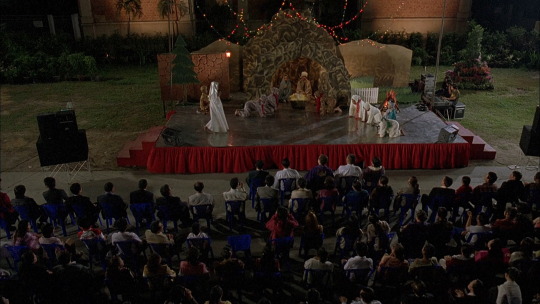
A nativity play right in front of the cathedral would be epic. However, this is artistic licence, as the school's primary section lies elsewhere. This area is now the red brick courtyard; Noh actually mentions in the novel that the school was undergoing a lot of landscaping projects. (Sahamongkolfilm International)
The Love of Siam may have been one of the first few instances where the wider public got to actually see what things looked like inside the school. Although it was only standing in as a location for the fictional St. Nicholas School, there was something about seeing students in their sea of blue uniform shorts that tickled the imagination. Such was the effect that when Love Sick began serializing as a web novel on Dek-D.com a year later, the Thai subtitle, usually translated as The Chaotic Lives of Blue Shorts Guys, undoubtedly helped fuel its popularity.
But what's so special about these blue shorts anyway?
This might come as a surprise to international viewers who've only primarily seen Thailand through its TV series, where they tend to be over-represented, but school uniforms with blue shorts are actually rather uncommon in real life. Let's look back again to Brother Hilaire's time, to find out more about their origins.
A history of the blue shorts
In the early days of formal education, most schools did not have defined uniforms, and AC students wore a varied assortment of costumes according to their ethnic background. The school first introduced a uniform in 1933, consisting of a white standing-collar jacket with metal buttons bearing the school insignia, blue shorts, a white pith helmet, white socks, and black leather shoes (though the helmet, socks and shoes remained optional). This was similar to a form already used by some royally affiliated schools since the 1910s,* though their shorts were navy or black. The reason AC opted for blue shorts is not recorded, though some writers have postulated that it may have been to reflect the common colour of the raj pattern costume, the formal dress of the time.
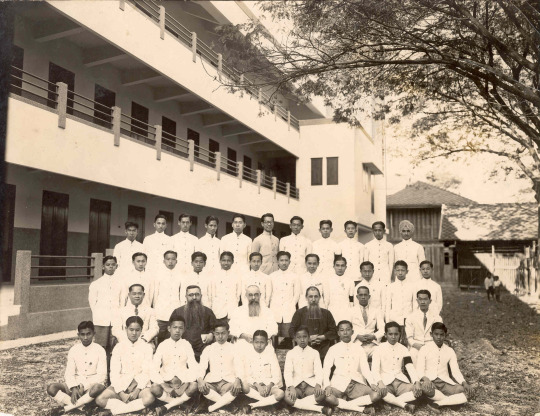
A class of AC students, with their teachers, in the 1940s. It's unclear whether the shorts were the school's original blue, or khaki green in accordance with the 1939 law. (Assumption Association, via The Cloud)
The first piece of legislation governing school uniforms came out in 1939 under the Fascist-leaning regime of Prime Minister Plaek Pibulsonggram. Male students in government schools were assigned a khaki green military-style uniform to match that of the government's Yuwachon Thahan military youth movement. Some AC students also joined the movement, though those who didn't continued to wear the white uniform, creating an interesting contrast which we'll come back to later. In 1943, at the height of World War II in Southeast Asia, a new law extended the khaki green uniform to all schools, but it's unclear whether it ever took effect as Pibulsonggram was ousted the following year and the Yuwachon movement was dissolved after the war's end.
In 1949, the old regulation was scrapped and replaced with a new one, which codified school uniforms to the almost exact same appearance we see today: for boys, a white shirt, shorts, a belt, socks, and shoes. But the shorts were to be khaki for all schools, except those who requested otherwise to the Ministry of Education. Assumption, together with its sister Gabrielite schools, were among the first to register exemptions and became the only schools with blue shorts for their uniforms for several years.
In 1961, the national regulation was changed again to allow schools to choose between khaki, blue, navy, or black shorts. As time passed, boys' uniforms developed into the convention we see today: black or khaki shorts for government schools, blue or black for private schools. But given their prominence, the image of the all-boys Catholic school has remained one of the strongest associated with the blue shorts uniform.
Not that it mattered much back then, though. In the pre-digital era, people's exposure to different schools was mostly limited to their immediate locality and depictions in the media. While blue-shorts uniforms did feature in some teen movies and sitcoms in the 1990s,† those works didn't really play into the stereotype, and the 1997 financial crisis soon disrupted most media production anyway.
Attracting attention
Then several things happened. The BTS Skytrain opened in 1999, and Bangkok became much smaller overnight - at least for the middle class. Cram schools moved into building spaces in Siam Square left vacant from the recession, and saw an explosion in popularity. School students from all over now flocked to Siam Square in the evenings, and the video classrooms became something of an inter-school melting pot where one could catch sight of all sorts of uniform styles and colours.
And the AC boys, they very much stood out.
It's unclear exactly when things began, but throughout the years, Assumption students had developed a fashion culture of their own. The school is one of a handful that require leather shoes (as opposed to canvas),‡ and its upper-secondary students usually opted for a certain pointy style produced by a couple of old shops on Charoen Krung Road. They would also have their shorts tailor-modified to be very short - typically 15 inches or less, while uniforms coming out of the factory are usually 18 inches at the shortest for high-schooler sizes - and wear them with waists pulled very low. This was despite the rule book stating, like any other school's, that shorts should reach no more than 5 centimetres above the knee. It's actually a common refrain of experiences retold by AC students and alumni that they'd get into trouble for their shorts and shoes whenever the disciplinarian teacher would inspect their uniforms. But it was also part of the challenge, to stay on top of the fashion of their peers and at the same time get away with it.
This fashion only added to the fact that those vivid blue shorts are very visible, like, even from 100 metres away. So, coupled with the stereotype of them being rich kids with likely above-average attractiveness, these AC boys' uniforms easily caught attention, whether they were entering late into a cram school classroom or queuing for the train at the BTS's central interchange at Siam Station during rush hour.
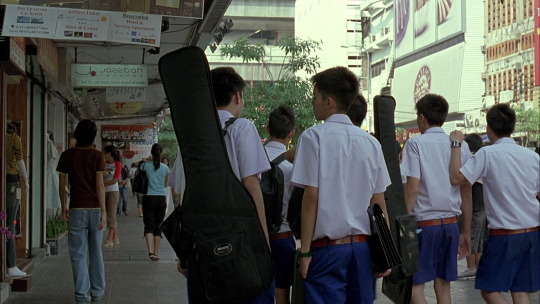
This group strolling down the streets of Siam Square would surely draw plenty of eyes in real life. (Sahamongkolfilm International)
The turn of the 21st century also saw the spread of internet access, and with the early web came the proliferation of online discussion forums, both smaller ones serving specific groups like schools and larger public communities like the youth-oriented Dek-D. Suddenly, it became possible to peak into some of the conversations kids elsewhere were having and share in the knowledge of their hijinks at school. This, in some ways, helped fuel the fantasy of this exclusive boys' world, filled with good-looking guys in revealing shorts who weren't averse to having physical contact with each other.
The online forums also gave birth to web fiction, which soon expanded to include the emerging Y (BL) genre. Naturally, these trends eventually converged to give us plenty of Y fiction set in all-boys schools. But the epitome of these wouldn't arrive until after The Love of Siam hit screens in 2007.
The Love of Siam was probably the first major work in a decade to prominently feature the blue shorts uniform,§ and this time it was actually used to highlight the Catholic boys' school setting, employing AC itself as the location. Though it appeared only in a few short glimpses, they were powerful images that further inspired fascination with the real-life school.
It might be because it's accurate, or because the film has completely coloured viewer's perceptions, but this scene is exactly how one would imagine things to be like in those Catholic boys' schools. (Sahamongkolfilm International)
Then in 2008, Love Sick quietly began serializing on Dek-D's writers' section. The story's premise was simple, but it so effectively tapped into this collective fascination and quickly rose up the site's readership charts. Its popularity came no doubt thanks to author Indrytime's extremely lively and enjoyable writing of Noh, who narrates the story throughout. But a large part of the appeal is also attributable to the lifelike portrayal of his school life, with plenty of references to actual locations both within the school and outside - including the convent school next door and the numerous shops of Siam Square. The novel also name-dropped some of the school's actual teachers who, in Catholic school fashion, are addressed as Miss and Master, and Noh even mentions specific happenings at AC, like the new belt buckles that had been added to the school uniform for younger students that year. The only thing not mentioned was the name of the school, which was intentionally left blank. So close did the story feel to real life that the author had to emphasize its fictional nature when people started speculating about the real identities of Punn‖ and Noh and tried to identify them with actual AC students.
But the most significant reference to real life in Love Sick by far must be its descriptions of what is clearly meant to be the Jaturamitr football competition - a biennial event between Thailand's four oldest boys' schools: Assumption College, its Protestant counterpart Bangkok Christian College (BCC), and the royally founded government schools Suankularb Wittayalai (SK) and Debsirin (DS). The tradition is a HUGE part of school life at these four schools, which pretty much share this culture of intense collective institutional pride.
These boys and their ball game
It's kind of hard to explain all that the competition entails, but the football is just a small part of it. This YouTube video looking at the BCC side makes for a nice intro.¶ There are parades, mascots, Thai-style cheerleading (featuring not acrobatics, but synchronized arm movements), and most notably, the spectacular card stunt displays, which involve the entire student body from the lower-secondary years. The students will spend months practising to perfect their card flips, under the direction of the cheering president. Sounds familiar? That's Earn's position in Love Sick.

Fourwheels (Oxygen, Nitiman, La Pluie), wearing the cheering crew overalls that Noh dreams of, addressing the AC crowd in 2017 (AC Ed Tech)
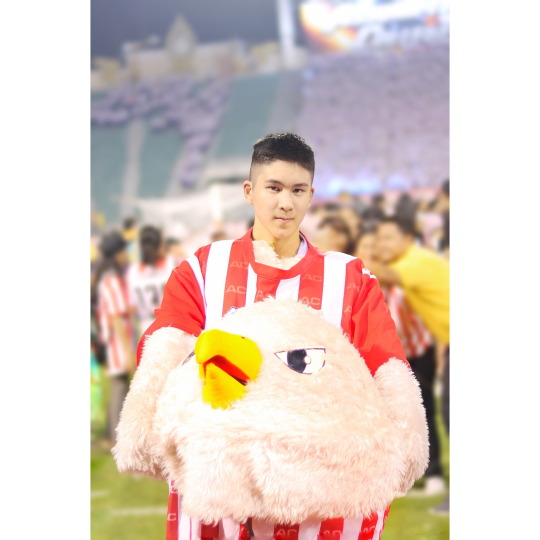
Beam Boonyakorn (Make It Right) as AC's eagle mascot, though it's often teased for looking more like a chicken, also in 2017 (TTaewTaew Twitter)
The card stunt tradition actually originated at AC in 1942, from the aforementioned contrast between the military youth and regular uniforms. A teacher came up with the idea of having the differently dressed students arrange to form the school initials on the stands. This eventually developed into the elaborate displays done today, which use coloured card booklets to create pixels that together form a detailed aggregate image. Crowds of 1,250 from each school, seated opposite the paying audience, are needed to perform these.
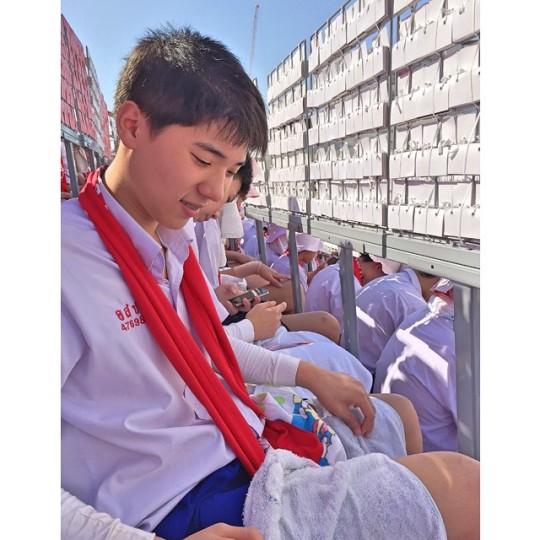
Oat Tharathorn (Fourever You) in the card-stunt-performing audience in 2014; note the plates of colour card booklets set on the racks in front of them. (oattrt Instagram)
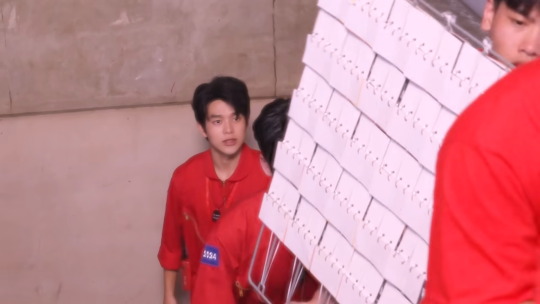
Such plates appeared in Love Sick 2024's episode 4 behind-the-scenes clip, but didn't show up in the actual episode. They later appeared in episode 5. (Tia51)
Regular fixtures among these displays include school logos, the royal family, and sponsors. There are also have these coordinated sequences with portraits of students and alumni greeting the crowd, which may feature some familiar faces.

A sponsor ad for Est gives way to AC student Chimon greeting the audience in 2017. (AC Ed Tech)
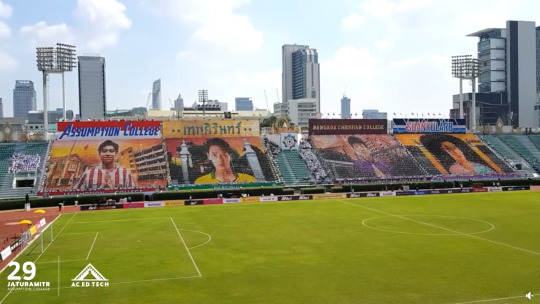
Alumni PP Krit (AC), Ice Natara (DS), Nonkul (BCC), and Sky Wongravee (SK) welcoming the audience, 2019 (AC Ed Tech)
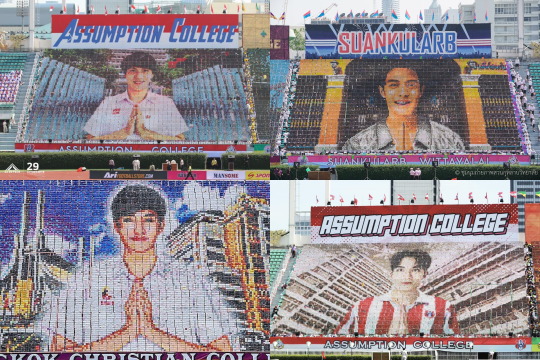
GMMTV's Marc (AC) and Ford (SK) from the same sequence in 2019; Inn (BCC) from before 2014; AC alum Net Siraphop in 2023 (AC Ed Tech; Suankularb Photo Club; inpitar Instagram)
This attention to popular students didn't exist during novel Noh's time, though. Back then, few people followed the event apart from the schools' students and alumni, and football people scouting for young talent. But the 2010s' "cute boy" craze brought a sharp rise in attention from the sao-Y and cute-boy-following crowds, who flocked to the matches, some equipped with huge telephoto lenses to capture not the football action but cute guys in the audience.

BCC alumnus Inn Sarin photographed in the audience in 2014. Photos of him from the event were virally shared and boosted his following and "cute boy" stature. (inpitar Instagram)

BCC cheerleaders Winny Thanawin (2017) and Ping Krittanun (2019) (BCC Jaturamitr)
The origination of Thai BL
In some ways, the Love Sick novel helped lay the foundations for the phenomenon. It gave readers this imaginary connection to the school, which drove interest in seeing what its real-life students shared on social media, especially as Instagram exploded in popularity around 2012. And of course, attractive boys in revealing uniform shorts was already a winning combination in itself (and the fashion soon spread to other schools).
So it's appropriately fitting that things would come full circle with the 2013 announcement of Love Sick The Series, which generated huge amounts of engagement as fans recalled their impressions of the characters and shared pictures of real-life AC students whom they saw as the perfect Punn and Noh.
As it turned out, recent AC graduate White was cast as Punn, and several other AC boys were also chosen for the many supporting characters. Fans readily took to following these budding actors from the moment they were announced, gathering to meet them after acting classes and supporting them through to the last post-series events. It was a revelation in how dedicated such a fandom could be, without seeing even a second of these actors' work.
For the production, though, it could hardly be expected that explicit reference to the real-life school would be allowed, so they named the school Friday College in the series. (Which kind of bugs me. Couldn't they have at least come up with a vaguely Catholic-sounding name? Anyway, they developed it into a brand and it's stuck now.) They did model the school emblem and uniform exactly after AC's (in its 2008 form, before the new belt buckle), and the same uniform was featured in Thank God It's Friday, a 2019 spin-off set in the same universe. However, the school emblem was redesigned for the 2024 Love Sick remake, maybe because the resemblance now felt too close for comfort. (Another detail that bugs me is how the 2014 series had four-digit student IDs, while the 2024 has six. Most real-life schools have five digits!)
While it would have been a dream come true to see the actual original locations in the series adaptation (even if unnamed), this was not to happen. In fact, unlike its sister school Assumption College Thonburi, which served as the location for Hormones and numerous other works, AC seems to no longer be keen on allowing access as a filming location, and hasn't been spotted in anything since The Love of Siam.
Anyway, Love Sick's broadcast was a turning point in several ways. Of course, it most importantly kickstarted the Thai BL industry,** but this also led to a shift in Y culture where shippers turned their focus from real people to actor pairs from series. "Cute boys" from social media were now regularly tapped to join the many budding modelling agencies, who would try to push them as actors and influencers, and AC students attracted particular attention. Make It Right (2016)'s Peak, Ohm and Beam, for example, were all scouted from the school.
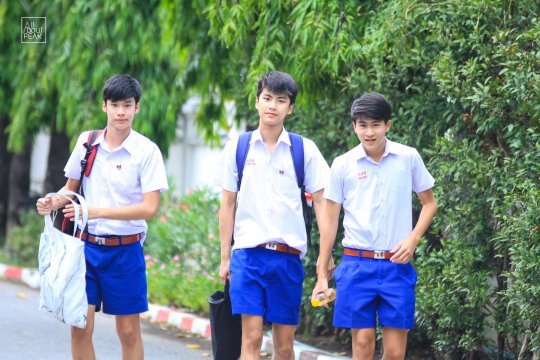
AC students Peak, Ohm and Beam, taken by a fan account in 2016. (allaboutpeak Twitter)
The boys made use of their newfound cult. Popular AC students were tapped to promote the school's annual Christmas Fair, which drew an influx of visitors from their followers, who happily contributed to their fundraising efforts. This was much changed from Noh's time in the novel, when the fair was still pretty much an internal event for students and their immediate friends and family.

Turbo (Love Stage!!) promoting merch for AC's 2015 Christmas Fair (turbotb Instagram)
However, this trend, as with the cute boy craze itself, seems to have largely petered out, especially as life was disrupted by the COVID pandemic and the 2020 protests brought about sharp changes in ideology among young people. Another victim of this has been the Jaturamitr competition, which was postponed for two years before taking place again in 2023.†† But it then became the topic of a huge online drama over the compulsory nature of attendance for the card stunt performances (which not everyone willingly enjoyed), and the negative public attention soured the experience for a lot of the students.
These new concerns seem to have influenced Love Sick's 2024 remake. In the novel, during preparation for the football competition, Noh talks about how hard the marching band was practising, and how he and the band leaders felt the need to push them to perfection, in order to uphold the school's reputation. There's a clear institutional pride in the way he says, "I'm sure the young ones understand. (Or if they don't now, they will in a few years.)"
This stands in sharp contrast to Earn's stance in Love Sick 2024, where he says in episode 4, "If the formation fails, the school’s reputation will just take a hit. But the school doesn’t have feelings, does it? It is they (the young ones) who have feelings."
We'll find out in a couple of hours how else they're updating the depiction of the competition, which was one of the highlight scenes in the novel thanks to how detailed it was with insider info of the behind-the-scenes workings at the Suphachalasai National Stadium in real life. It's an unfortunate fact, though, that it's near impossible that any TV production with a normal budget would even come close to the spectacle of the actual event, with its crowds in the tens of thousands. But let's see how creative the production crew can be.
After all, it's the emotional threads that make the real highlight of the story, isn't it?
Footnotes
* These schools had been set up after the English public school model by King Vajiravudh, who himself was educated in England. Vajiravudh College still uses it as its ceremonial uniform.
† One of these was I Miss You 2 (1996), which was filmed at Montfort College in Chiang Mai, another Gabrielite school. Incidentally, The Love of Siam director Madeaw Chookiat was a student there and became an extra in the film, an experience which inspired him to go into filmmaking. He would later base the Nay-Beam segment of Home (2012, one of the most significant mainstream proto-BL works) at the school.
‡ Most other schools allow both, and their students usually prefer canvas shoes. Nanyang, with its iconic green soles, has long been the most popular brand.
§ Actually there's at least Yong Songyos's Dorm (2006), set at his alma mater Assumption College Sriracha, but it's a horror focusing more on the boarding-school aspect. Yong also created a short film dedicated to the school in 2015, starring four Hormones Next Gen actors (no English subs, but there are hardcoded Thai captions that maybe a tool can translate).
‖ Sorry, but I just can't accept the spelling Phun, as it's plain incorrect. The /p/ and /ph/ are supposed to represent different sounds in Thai, but most Thai people don't understand the system as it's not taught in schools.
¶ As an expat, the video creator misses the meanings of some of the things that happen in the video. The yellow chicken is a reference to a Facebook satirist who's said to bring bad luck to sports teams, while the no-banana sign is a response to the angry chant the BCC side was yelling. It's an expletive that rhymes with the word for banana in Thai.
** Isn't it ironic that a genre revolving around a topic so controversial with the Church should be inspired by a Catholic school? But then, as director Madeaw demonstrated in The Love of Siam, religious conflict has always played an important role in driving social issues, while in the case of Love Sick, it's not actually relevant at all.
†† Yet another victim is the Chula-Thammasat Traditional Football Match, a competition between Thailand's two oldest universities which features similar elements of parades, cheerleading and card stunts. It hasn't been properly held since 2020, and when a substitute event was held in 2024, a huge online drama erupted over the student body's decision to alter certain elements.
119 notes
·
View notes
Text
So we’ve gotten to the PerthSanta part of Perfect 10 Liners, okay, time to properly watch it. Even though the Junior playing the younger sibling still throws me for a loop, I’s really just watching because I wanna see Perth and Santa’s chemistry with one another. Especially considering their less that 6 degrees of separation, it’s more like 2 degrees lol.
Perth worked with Cooheart on LBC and UWMA, Santa was paired with Cooheart after UWMA, then after a few years together he then left the EarthSanta pairing and went into the PerthSanta pairing at GMMTV. I wonder if they had any awkward conversations about Perth’s past with Cooheart when he was younger, considering Perth was the only actor from the LBC days that publicly apologized to Cooheart for bullying him.
Note: not all the LBC actors bullied Earth, Saint definitely didn’t, neither did Soodyatch, Title or Earth Pirapat. Basically Perth was a just stupid 16 year old who gave into peer pressure from the older boys, he felt horrible about it when the videos came out of them making Earth cry in their hotel room during the LBC press tour and he apologized. Had that video come out now though? Whew boy! I can just imagine the backlash.
He and Cooheart have a decent working relationship now, they have been good with each other for years actually, which is how they were able to play best friends In and Somkrit in UWMA. Cooheart holds no grudges as far as he’s said, and Perth has spoken about the shame he felt during that time of his life multiple times. Although it is an uncomfortable topic for him because of what he was going through with Saint as well, not that that was any of his doing, that was 100% the management company’s doing. Nearly ruining those poor boys, I’m glad that PerthSaint managed to stay close over the years and are still good friends.
#perfect 10 liners#perthsanta#perth tanapon#santa pongsapak#earth cooheart#saint suppapong#bl history#earthsanta#perthsaint
22 notes
·
View notes
Text
I've been going through my collection of old (pre-2016 for the most part) academic papers on BL and thought, hey, why not re-read some of them and sum them up so folks can see whether they want to check them out in full?
Today's offering:
Beautiful, Borrowed, and Bent: “Boys’ Love” as Girls’ Love in Shōjo Manga by James Welker, originally presented at the Third International Convention of Asia Scholars, August 19–22, 2003, Singapore, and published in Signs, Vol. 31, No. 3, New Feminist Theories of Visual Culture (Spring 2006), pp. 841-870, UChicago Press. [Jstor]
Welker starts off with a brief explanation of what the BL genre is, what terminology he uses ("BL" as an umbrella term that includes the earlier names of tanbi, shōnen ai, yaoi, and the long-form 'boys' love'):
“Boys’ love” manga emerged as a subgenre of shōjo manga (girls’ comics) around 1970 just as women artists were taking over the shōjo market.(*) It quickly became among the most popular shōjo manga genres, and its creators became some of the best-loved artists in the industry. (* First published in the monthly Bessatsu shōjo komikku in December 1970, Keiko Takemiya’s “In the Sunroom” (Sanrūmu nite [1970] 1976) was probably the first boys’ love narrative. See Aoyama 1988, 188.) - Welker 2006:841
He goes on to challenge the common perception of BL as a genre "by straight women for straight women":
[T]he genre is widely considered to offer a liberatory sphere within which presumably heteronormative readers can experiment with romance and sexuality through identification with the beautiful boy characters. […] Members of the Japanese lesbian community have, however, pointed to boys’ love and other gender-bending manga as strong influences on them in their formative years […] Clearly boys’ love manga can be viewed through a different lens from that which most critics and scholars have been using, and hence the full potential of boys’ love is largely overlooked: that of liberating readers not just from patriarchy but from gender dualism and heteronormativity. - Welker 2006:842-843
He introduces the texts he will analyse (Takemiya Keiko's Song of Wind and Trees 風と木の詩 kaze to ki no uta, 1976-1984 and Hagio Motō's Heart of Thomas トーマの心臓 tōma no shinzō, 1974), and concludes the essay's intro section as follows:
This reading will employ lesbian critical theory, visual theory, and reader responses to these and similar texts to show how 1970s boys’ love manga is not merely queer on its surface but how it opened up space for some readers to experiment with marginalized gender and sexual practices and played a role in identity formation. - Welker 2006:843
Welker goes into the questions of applicability of theories that weren't originally developed for this specific context – visual theories were largely developed through film analysis; European and North American models of gender and feminist theory, while also having informed academic discourse in Japan, in their origin operate on culturally specific assumptions and need to be applied with care.
He talks about the tradition of androgynous and cross-dressing heroines of early shōjo manga and their connection to the earliest BL manga, the dilemma of the "beautiful boy" characters' gender and sex and how to read these – are they boys? idealised self-images of girls drawn onto boys' bodies? neither male nor female? sexless altogether?, and the way Japanese readers in the 1970s, already culturally familiar with gender performance through kabuki or the all-female Takarazuka Revue and similar troupes, received the gender-bending nature of BL stories. He also comments on the role fan interaction via magazines, and the way readers were learning about queer life in Japan:
By the early to mid-1980s, the magazines’ readers were learning in real terms about the world of Shinjuku ni-chōme, Tokyo’s well-known gay district, described as a world full of “beautiful boys like those in the world of shōjo manga” (Aran 1983, 15), as well as various aspects of lesbian life in Japan (Gekkō 1985). In spite of the connections drawn on the pages of these magazines, the possibility that these narratives might be seen to actually depict homosexuality remains broadly denied. To allow that the narratives might truly be about homosexuality—between these girls-cum-beautiful boys—would be an apparently unthinkable invitation to read the narratives as lesbian. - Welker 2006:857
Welker briefly explores how the example texts of Song of Wind and Trees and Heart of Thomas "serve many of the functions lesbian critics and theorists have outlined as roles of lesbian texts" (Welker 2006:858), then goes on to analyse the flower imagery of roses and lilies that is very prevalent in both titles, the intertextuality of these stories with European and French literature (and how the readers were expected to catch on to this intertextuality). On the transgressive and queering nature of writing and reading BL, he says:
[T]hrough acculturation to gender performance in Takarazuka and kabuki and by such cross-dressing manga icons as Sapphire and Oscar, as well as the deliberate ambiguity of the beautiful boy, the reader is encouraged to see not just a girl but herself within the world of boys’ love and, ultimately, is encouraged to explore homoerotic desire, either as a beautiful boy or as herself, either alone or with others, either as her fantasy or as her reality. […] Regardless of whether boys’ love manga were created merely to offer heterosexual readers a temporary respite from patriarchal restrictions on their desire, some readers found in identifying with the beautiful boy a way through the looking glass to a world outside the patriarchy. And regardless of whether he is read as a boy or a girl, the beautiful boy can be read as a lesbian. […] For readers whose experience of sexuality and gender contravenes heteronormativity, works like Song and Thomas offer narrative safe havens where they can experiment with identity, find affirmation, and develop the strength necessary to find others like themselves and a sense of belonging. - Welker 2006:865-866
I've been out of academia so long that I've lost any sense of what a good proportion of direct quotes to original text is, or whether it's even appropriate to quote as much as I did here. This is emphatically NOT an academic article in and of itself -- I'm posting on bloody tumblr. If anyone wants to add to this, I'll be thrilled.
One of the most commonly voiced criticisms of BL is that it's about, but not (or did not in significant part used to be) by or for gay men. This article does not address this point further—Welker does go into this in his more recent articles, iirc; if you've got beef with this aspect, @ him not me. I do however think it's worth noting that this 17-year-old article already recognises that the genre is queer, and has been since its inception.
#bl academia#bl theory#james welker#bl history#yeeting this into the void now#reading academic papers for fun not profit#my nonsense#watch me find errors or typos the minute I've hit post
111 notes
·
View notes
Text
The Story of Live Action BL in Japan
This is an extra post to accompany the history of BL post I did earlier.
Japan has had live action BL long before Thailand entered the picture. It was however mostly melancolic stories or manga adaptations, until their own particular boom happened. I make a difference between what I would call LGBTQ+ representation and BL Live Action, because even though they have existed parallely they are fundamentally different in their conception. Here is an interview with the curator of an exhibition that was held in Japan about the history of Japanese Queer Cinema.
The evolution of Japanese BL Live Action has been very slow, and mostly influenced by manga. It is still not a big market, but it has improved a lot in the most recent years. This is my attempt to put it into phases:
The indie like movies and bad manga adaptations
Let’s start with Boys Love (a movie), shall we?
It is the year 2006 and up to this point there has been a small boom of gay stories in the 1990′s (the first Tokyo International Lesbian & Gay Film & Video Festival was held in 1992 me thinks this might have sprung the yaoi debates). In the 2000's, we're at the start of a new little boom on BL type movies being made. Many of which would be directly released in DVD, with a constant melancholic and tragic approach to love stories between young men.
Homosexual love is only attarctive to the mainstream if it’s painful. Like typical japanese imposible loves that are explored because of the passion and innevitable tragedy (it’s a japanese trope of almost any kind of romance movie, up to these days). its the intensity of feelings and the poetry of it all. In Boys Love we see those elements that are now very common in BL manga. Straight men falling in love with beautiful young boys and loving them until their tragic end. The movie was released in theatres and was successful enough to get a sequel. Here is a very good review of the movie, to know more about it.
A number of similar movies (with happier endings) follow through. Then enters the Takumi kun series. Based off one of the most popular yaoi novel (and potentially the first live action novel/manga adaptation of BL), it has all the June tropes: Traumatized feminine Takumi, raped by his older brother when he was young, has developped an abberation to human touch which prevents him from making friends. He goes to a boarding school for rich kids where he shares a dorm room with Gii, the most popular kid on the premises, who has fallen in love with him. And it is through that love that Takumi gets over his illness and heals from his past. It was such a success in the BLsphere that it got 4 more movies. I believe it is the bane of @absolutebl existence.
After the first Takumi-kun movie, the production of BL type movies, or adaptations of manga gets a boost. We go from no more than 3 movies a year to 8 in 2008, ie:
Kindan no Koi Ai no Kotodama Taiikukan Baby
And so it continues. When a manga is popular enough it either gets a Live Action, a drama CD (voice actors record the manga dialogues) or/and a series of OVAs (Original Video Animation). Because that’s how they do marketing in Japan. I believe most, if not all, of these movies go straight to DVD. It’s a treat for the fans.
The beginning of the shift
As the manga source starts to evolve, so does the live actions. Japanese society starts being more aware of the LGBT (as the term is used for business startegy purposes). As it’s all about what is going to sell, slowly, a slight neutral realism starts to be felt. Melancoly starts to be replaced with happier moods.
The first adaptation I genienly enjoyed at the time was Seven Days, 2015. A 2 part movie, adapted from the manga, with a very simple story (still no characters properly defined as gay, but maybe they could count as bi?)
While more LGBTQ+ movies get made, the BL Live Action movies remain in the same vein. Adpating what is popular and sticking to the tropes of the time. For example, in 2017 we get simultaneously:
BL - Hidamari ga Kikoeru. A loud and energetic college student becomes friends with a hearing impared classmate, as he helps him take notes for class.
LGBT - Close Knit. An 11 year old girl gets tossed aside by her mother and goes to live with her uncle, who is dating a transgender woman.
The Middle Aged Man Phenomenon
Have you wondered why office settings are so popular in japanese BL? Well, it is mostly Ossan’s Love fault in my opinion.
Besides office romances being a staple of japanese tv dramas, in 2016 two major mainstream actors (Tanaka Kei and Yoshida Kotaro) participate in a small short film about a salaryman who discovers his boss is in love with him. A simple comedy filled with misunderstandings and funny shenanigans. As the response to it was very positive, they decided to turn it into a full flegged series. And so, Ossan’s Love comes out on prime television (TV Asahi) for all to see. It is the first time we see a story like this being shown in a mainstream channel, for all and anyone to see.
A year later after the success of Ossan’s Love we get the wonderful Kinou Nani Tabeta/What Di you Eat Yesterday? (2019), which would not have been possible without Ossan’s Love. There was confidence that there was a market for such a story. Followed by the OL movie: Ossan’s Love: Love or Dead. Which was later followed by a horrible horrible second season that nobody wanted. On this year too, Mood Indigo comes out. A sequel to The Novelist/Pornographer, which would secure it’s popularity. It later got a second season.
We are now in a second boom of interest in queer stories. And the number of movies and tv shows grow. Some of the most known:
Novel adaptation - Fujoshi Ukkari gay ni kokoru LGBT Movies - His Dramas - Life: Senjou no Bokura
Queer voices have been increasingly loud and, in 2015, two municipalities put in place a partnership to acknowledge same sex relationships (not recognized outside of those municipalities unfortunately).
And so, start mixing the homophobia free idealized stories, with more diverse queer content, with the harsh realities of LGBTQ+ people, and the cinematic interest of the filmmakers/directors.
The rise of the salaryman and the thai breakthrought
Thanks to the appeal of middle aged men, Japan now knows there’s a market to be had in producing BLs, so the adaptations sprout like mushrooms. The ground is ready to bear fruit, and so enters thailand with the big success of 2gether at the beginning of 2020.
Japan got to have the movie screened in their theatres. Thailand has broken the Japanese market barrier, as soon as the borders open after the pandemic, fanmeetings are held there one after the other.
And then, we get Cherry Magic in late 2020, which continues to cement that the current japanese BL boom is still going strong.
The Aftermath
The production of BL shows and movies reaches its peak and we get 26 (shows and movies) in 2022. Movies, specials and second seasons are being made.
From Utsukushii Kare 2021 to Strange 2023. Old and new manga gets an adapation and more queer representation grows in media overall.
The story of LGBT representation in shows in Japan
As an extra, I want to put here a few examples of how queer characters, and stories have entered the mainstream of japanese tv dramas. Many mainstream actors have also taken upon portraying such characters.
Pretty Proofreader (2016) - featured a gay side character, not relevant to the plot. My Brother’s Husband (2018) mini series - adaptation of Gengoroh Tagame’s manga about a man overcoming his homophobia through getting to know his bother’s husband Life As A Girl (2018) mini series - the life of a lesbian trans woman Ie Uru Onna S2 (2019) - one episode features different types of LGBT people who want to buy a house and the difficulties they face. Also had some type of side gay stoyline (a little queerbaity)? Ore no Sukato, doko Itta? (2019) - a gay man who dresses as a woman becomes a teacher at a highschool and helps with his is student’s problems.
Special mention to Residential Complex (2018).
A drama that featured 4 families living in the same residential unit, each with their own fundamental problems. The father in the traditional japanese family was unemployed, the man engaged to a younger second wife who wanted no children ends up having to take care of his son from his previous marriage, the young newlyweds that are eager to have kids can’t concieve and the single architect is actually living with his boyfriend. It was a show that had worked with an LGBT organization to make a faithful protrayal of LGBT realities.
Final Thoughts
Here is a list of all Japanese BL and Queer media, Japanese BL list. I recommend to check it out to see the variety of adaptations being made today. It is intersting to see the differences in plot in the shows that are adapting current manga (Our Dining Table) and those adapting older manga (Candy Color Paradox). There is also a lot of queer movies and shows worth checking out. Here are my recommendations:
Kamisama no Ekohiiki (series)
Both Me and Him are the Grooms (movie)
I think it is great that Japan is intergrating queer stories and voices to their BLs, as well as adapting more content to the screen. It is a very exciting moment to be living through, but it still feels like it might go away just as fast as it came. Japan is a very conservative country, that embraces change so very slowly. Queer vocies are making noise, but they have yet to manage to make their government listen. Japan is very setback in this sense.
I do no think Japan will be able to have a BL market similar to Thailand for its live action adaptations any time soon. They stick to what they know, which sometimes can be very good and others, bad.
I do hope for BL to keep on doing what it does best for society: subtly normalizing queer lives so that conservative people start welcoming the idea that they're just regular people (who deserve rights, come on Japan).
Hopefully we’re headed there.
#history of bl#bl history#history of japanese bl live action#this was the quicker one to make#the yaoi debates require more research#but it will be the next post in this series#I hope you had a fun read#I hope I did a good job#I don't know as much on this subject but I did want to make a post to give some context to why japanese bl is as it is
83 notes
·
View notes
Text
HIStory 1: My Hero
Right off the bat the premise of this show is 🦇💩, which I usually love.
However...
This scenario does make me a bit uncomfortable.
Premise:
Due to the mistake of some reaper-like character, the soul of a young lady, Lan Shi, gets taken instead of the young man, Gu Si Ren. To fix his mistake Reaper ends up taking Gu Si Ren's soul and allowing Lan Shi to have his body, which she can keep if she can get her boyfriend, Hero, to kiss her within 7 days, and she can't tell anyone the truth.
I'm not great at analysis, nor am I especially well educated in gender or queer studies, so I may not be able to eloquently put into thought or words what bothers me about the premise.
But. There is something about unwillingly stripping a character of their gender that bothers me. I'm all for trans characters (and real people), but that is not what is happening here.
This is a woman being forced into the body of a man. Will she retain her identity as a woman? Will she identify as a man? How does this affect her sexuality? She has already lamented that in order to keep this body she will have to "turn" her boyfriend gay. Will she be comfortable seducing Hero?
I also feel bad for Gu Si Ren, who by any metric had a terrible life, and terrible death. His soul is gone but his body remains, to be given to someone else to use. Which also feels like a violation.
I'm also a little unsettled with the boyfriend Hero's place in this story as well, but for a wholly different reason. As far as he knows his girlfriend just died, and this character is expected to be kissing someone else within a week?! I'm guessing this show is going to blow right past Hero's grief.
Will this show use this premise as a chance to explore issues of gender identity and sexuality? I'll admit my hopes have bottomed out for this show. I'll have to finish it to see.
I've seen that some of the other episodes/seasons of HIStory are highly recommended, so I won't allow whatever happens in this one to dissuade me from watching the others.
***************************************
After finishing watching it, the show was better than I anticipated, but I still have some issues with it.
Spoilers
Lan Shi had more agency in the body swap than I originally thought. She was complicit in taking Gu Si Ren's body. Her actions which came from a place of desperation, are actually pretty reprehensible.
Her plan was to take Gu Si Ren's body, identy and life, and use them for her own purpose. It's pretty heinous, if you think about it. For her plan to work she needs to deceive and manipulate Hero. And she never considers for a moment what her actions mean for Gu Si Ren. Also, Lan Shi never shows guilt or remorse for her actions.
She learns over the course of the week that Hero, wasn't in love with her, but likely had a crush on Gu Si Ren. She also discovers that Gu Si Ren was in love with Hero through reading his journals. Suddenly she feels like she's inserted herself into a place she doesn't belong (you think?!).
Lan Shi does eventually give back Gu Si Ren's body. It's at a time that is poignant for her, but awkward for Gu Si Ren and Hero.
Lan Shi doesn't ever try to correct any of the problems she created between the two guys, including some pretty insensitive comments about gay men that really upset Hero.
My Hero is a strange story with an uncomfortable premise that I think actually had more potential for exploring issues with gender/sexual identity, than it utilized.
It failed to be a romance due to the fact that the actual lovers are only together briefly, and we see very little of how their relationship evolved.
The show instead revolves around Lan Shi and her inability to recognize that her relationship with Hero had failed, and her unwillingness to accept that. Which, I also could have got behind if Lan Shi had been able to do some introspection and shown some growth.
It did turn out to be a lot better than I feared it would be at first glance, but ultimately it was underwhelming.
4 notes
·
View notes
Text



my friend @yaoivirginmary sent me the third page of the dmmd reveal article from cool b!!! thank you :)
30 notes
·
View notes
Text
Think you know older Thai stuff? Well, do you know THESE?
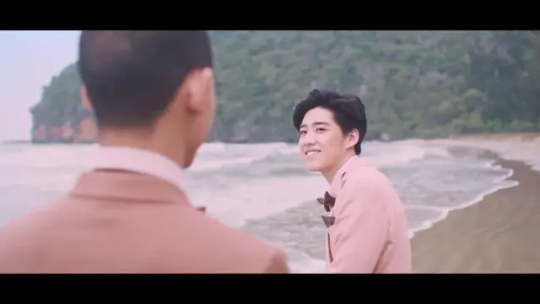
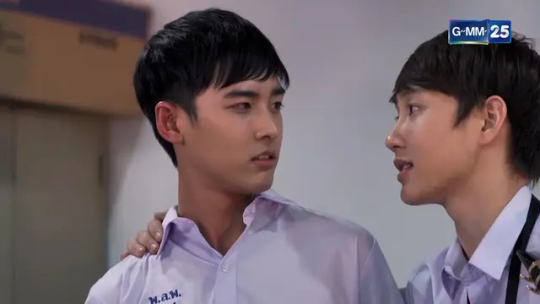
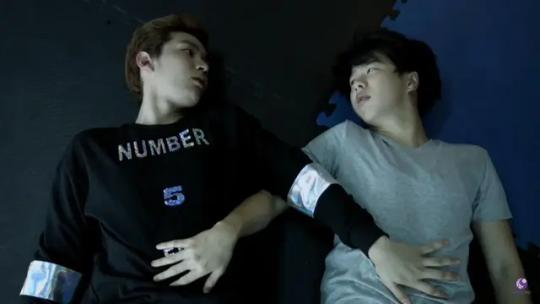
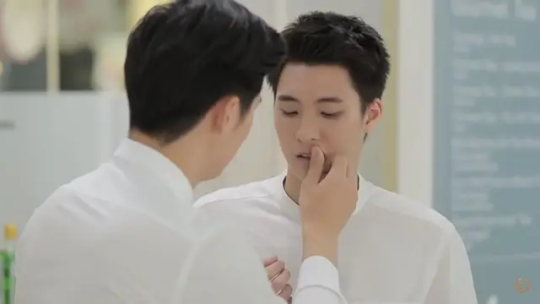
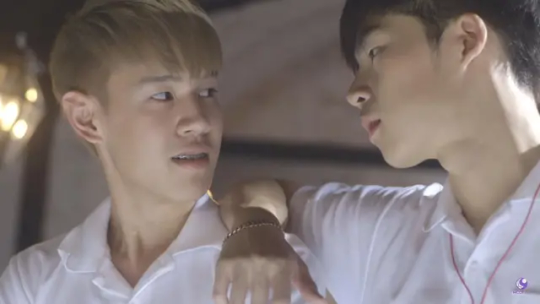

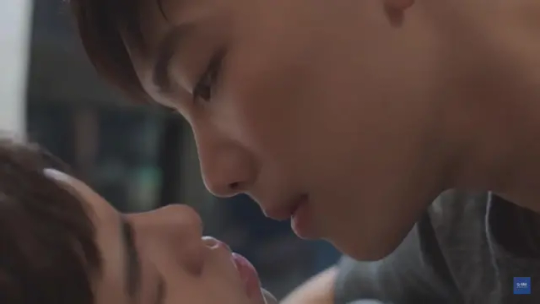

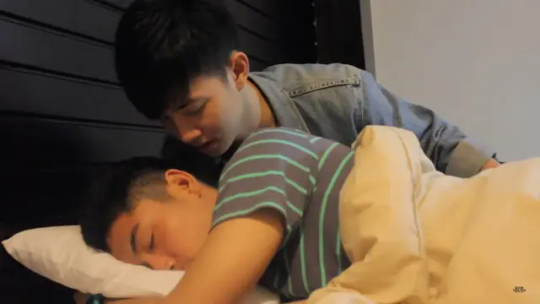
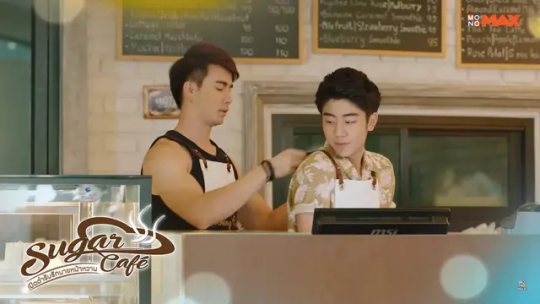
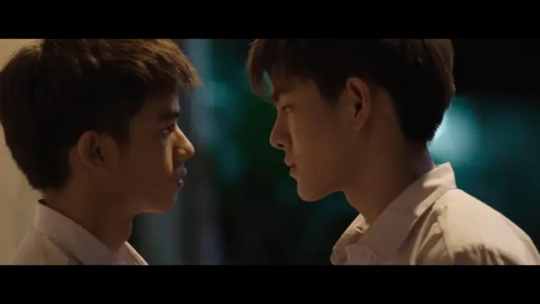
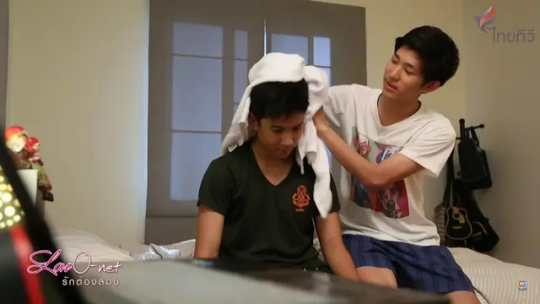

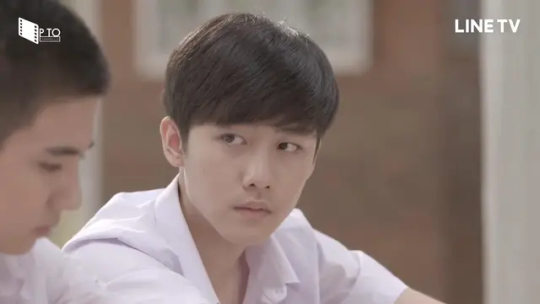
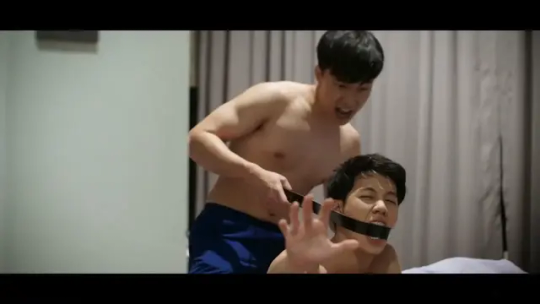
Here's something different for a change. Do you know what series/movies/shorts these are from? Have fun guessing! I'll come back to edit the post with answers in a few days.
Okay, here are the answers!
i Stories: G (2018) - Part of an anthology of LGBT-themed short films sponsored by Honda Motorcycle. PP 's character is part of a group of gay friends who knew each other from being dumped by the same guy.
Love Songs Love Series: Small Boats Should Leave (2017) - A non-BL miniseries with a small side plot where Plustor 's character has a crush on his best friend, played by Captain.
Part Time (2016) - The series has a BL side played by Kimmon and Zo Wongsapat (not in other BLs).
Wun Rak Phon Phak Tang Tua 2 (2016) - Not a BL. This scene from the sitcom has Mean Phiravich and Nut (ntsuntorn, who was in Water Boyy) 's characters doing servicey things for their vlog to gain followers.
The School (2015) - Gameplay and Bombbam Kirati (also seen in What the Duck) play this series' BL side couple.
Love Smart (2015) - A short web miniseries featuring Tommy and Tape Worrachai (The Tuxedo).
The Underwear (2017) - One of the storylines in the series is Got Kanidsorn (Bar in Love Mechanics 2022) 's character secretly crushing on his straight best friend played by Tong Supanut (Lop in Unforgotten Night).
Love Lie Hide Fake (2018) - Job (Miracle of Teddy Bear) and Best Anavil (Till the World Ends) 's characters play a shipped couple acting in a series, though the show's actual BL pairing is Best with Pop Khamgasem.
Memory of Love (2016) - A student short film series featuring Benz Natthapong (EN of Love: This is Love Story) and Mo Weerasak Saenkuntawong (not in other stuff).
Sugar Café (2018) - A straight rom-com movie with Zee and Year Chotritud (who had small parts in The Effect, Our Days) as a tiny BL side pair.
Dangerous Boys (2014) - An action movie with an early BL side couple quite notably kissing on-screen, played by Oat Pasakorn (So Much In Love) and Tong Surawit (Tamtam in That's My Candy).
Love O-net (2014) - one of the early proto-BL TV dramas, featuring Tong Piroonwat (Prince in Fahlanruk) and Speck Phisitphong (Chama in the same series).
Lie (2016) - a student short film featuring Singto and Kanin Smuthkochorn (better known as an ice hockey player).
Please... Siang Riak Winyan (2017) - A horror series and not actually BL at all. Mark Siwat and Perth Tanapon play step brothers.
The Right Man: Because I Love You (2016) - one of three short films sponsored by gay dating app Blued, featuring War and Earthlee Ardivat Leeruangsri (hasn't done other acting work). Each had a certain holiday-associated theme. This one's was mother's day, and it's a cute story about War's character, who's reluctant to come out to his mom. There are a few brief sequences of the boys hooking up and dating, but they don't really show anything particularly naughty (the picture is only seen as a still insert). Sorry for the tease. 😆
#thai bl#bl history#pp krit#plustor pronpiphat#captain chonlathorn#kimmon warodom#mean phiravich#gameplay garnpaphon#tommy sittichok#tape worrachai#got kanidsorn#tong supanut#job thuchapon#best anavil#benz natthapong#zee pruk#year chotritud#oat pasakorn#tong surawit#singto prachaya#mark siwat#perth tanapon#war wanarat
44 notes
·
View notes
Text
BL doujin & Men Who Make Some of Them
If BL is stories of androphilic men by androphilic women, then what’s the opposite of that? It would probably be stories of androphilic women by androphilic men.
The latter is what Minamoto Kazuki mainly dabbles in.
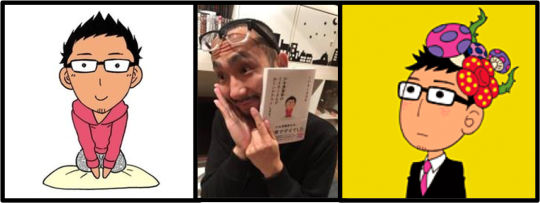
Apart from straight & BL manga, he also authored Shoujo Manga Artist Minamoto-San Comes Out. Yeah, that’s the title. It is autobiographical if that wasn’t obvious. Arguably, his most famous manga, at least in BL fandom, is Wall Circle's Doujin Artist Nekoyashiki-Kun's Desire for Recognition Grows which got live-action adaptation: KabeKoji in 2022.
Androphilic male characters who create straight content is not rare in BL. In 2023, from what I can recall, we got two such characters: Sung Woo Jae from Individual Circumstances (2023) and Yoh from Taikan Yoho (2023). Jinta from Cherry Magic (2023) also writes (presumably straight) romance. Even before that, we got an entire BL live-action franchise (starting with The Novelist (2018)).
Doujin production and consumption
Doujinshi (doujin for short) is self-published works. It includes both derivative works (fan works) as well as original works. It is estimated that nearly half of the doujin produced and circulated are BL. These are traditionally sold at conventions like Comiket. These days doujin are sold online, for example through dedicated websites like DL site.
Doujinshi culture and Comiket especially has been instrumental in the development of BL as a genre. Unfortunately, unlike other BL pioneers such as Mari Mori (her 1961 novel A Lovers' Forest is considered the first BL) and the Year 24 Group, Meikyu doujin circle (Yoshihiro Yonezawa in particular) seldom find mention in history of BL.
BL doujin grew side by side with commercially published works. The original use of the portmanteau yaoi (no peak, no fall, no meaning) was an indication of plot what plot nature of those doujins that subverted the East Asian narrative structure to focuse exclusively on erotic relations. Doujin BL varied widely in themes and approaches, even more than commercial BL as doujin are not created to appeal to the masses, instead cater to super-specific fandoms. Also, it is easier to debut into doujin arena than to commercial BL. However, since these are literally ‘thin books’ in most cases, there is associated limitation. There is cost of printing to be taken into account as well.
As more explicit doujin (yaoi) and less explicit BL (shonen ai, etc.) coevolved in a porous environment, BL transformed into a successful genre in itself with numerous dedicated magazines and multimedia adaptations. Moreover, doujin was good ground for experimentation and yields in that arena made its way into mainstream BL and enriched it.
Commercial BL welcomed many doujinshika into its fold. e.g. Ayano Yamane (author of the Finder series) is associated with a bunch of doujin circles at different points in time: GUN MANIA, Shouhoku Taiiku Yougushitsu and Ouka Seisaku.
BL mangaka continued producing both doujin and commercial BL. e.g. Kizu Natsuki (author of Given) is a prolific doujinshika under the name Gusari in Sashikizu circle.
BL mangaka produced doujin of their own work. e.g. Ichikawa Kei (author of Blue Sky Complex) published erotic extras as doujin.
These days, there is pixiv among others and long serialization possibilities. Authors are less constrained by space – unlike physical publication, web publication is not constrained by real estate (number of pages, chapters, etc.). Thanks to the internet, the distance between doujin and commercial BL have shortened.
A lot of gei comi (bara) is also self-published.
Doujin BL culture exists everywhere BL is famous with wide variation.
Doujin played an important role in emergence and growth of Korean BL. e.g. Totally Captivated by Yoo Ha Jin had doujin extras.
Chinese doujin culture is slightly different from that in other countries. Note-worthy is the self-publication of danmei (Chinese BL) novels. Three most recent cases against danmei authors [and their accomplices including those who helped the authors print, bind, package and sell those copies] were for self-publication.
天一(Tian Yi) for her student X teacher SM erotica 攻占 (Seize Control) - charged for self-publication and violation of law prohibiting publication of obscenity [explicit SM involving a 17-year-old student and his teacher in the novel]
深海先生 (Mr. Deep Sea) for her historical romance 锁帝翎 (aka 笼中帝 ; The Caged Emperor) - charged for self-publication.
There is a third. But the details are not available in the public domain.
It used to be a common practice for authors to self-publish uncensored versions of their web-published works, sometimes with explicit extras. These were intended for fans who wanted to collect these copies and to express their appreciation to the authors. Both self-publishing and “obscene content” are illegal in China.
Doujin, BL and their creators
Kabe Koji is the journey of a doujinshika, Mamoru Nekoyashiki, who yearns to be recognized as such and also as a beloved. While in high school, he fell in love with his childhood friend Kazama Issei whom he is sure doesn’t like him like that, thanks to rampant compulsory heterosexuality. Being gay was something he felt he had to keep under wraps not only because of fear of rejection but also because of heterosexism. Talented in drawing, he visits Comic King, a popular otaku convention where he discovers a different world – where male androphilia is celebrated in art.
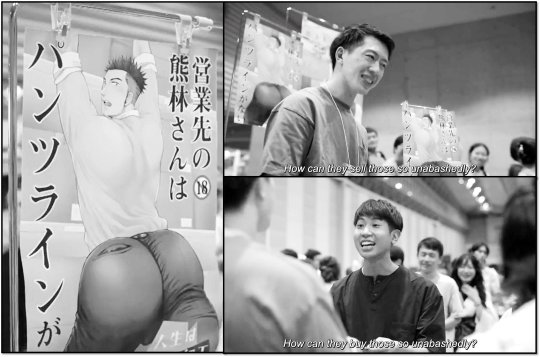
This inspires him to cultivate his talent in drawing and to pursue a career in manga. Since the art he was most drawn in by was ero-manga with macho uke with bitch characteristics, that’s the style he pursues.
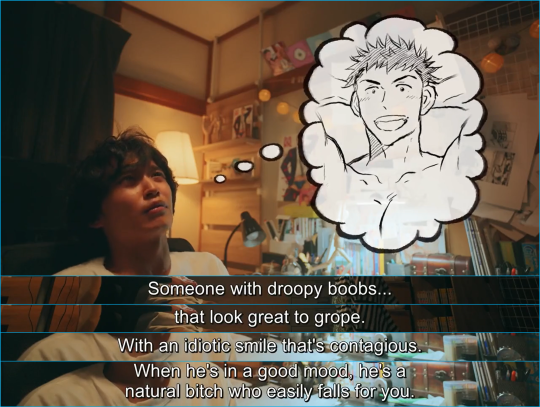
When we meet him, this is the subgenre that we see him focusing on. His influences are pretty obvious.
Moreover, the main character (hence the target of affection in his work) looks a bit like his crush. Issei notices this and tries to draw himself like that (with disproportionately thin neck) in little notes and letters to his Mamocchi.
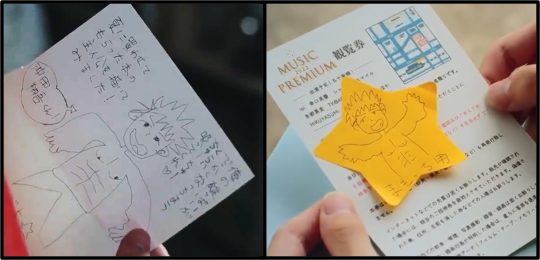
[I honestly think Nakao Masaki was bit of a miscast for this role appearance-wise because in the manga Issei is more on the gacchiri (muscular) side of ikemen. Whoever thought Torii-san’s uke from Fudanshi Bartender no Tashinami (2022) would be right fit for Issei’s character. The actor clearly didn’t disappoint in any other aspect. This is like the case with casting decision in One Room Angel (2023) wherein a manga character with gachimuchi aesthetics was changed into a lean ikemen. An opportunity for a different body-type was wasted. No complains against those actors since they aren’t the ones responsible for casting.] This is an erroneous assessment. Thank you @tompetertrash for correcting me.
Nekoyashiki, while pursuing training and education in manga making, has already established himself as a fairly successful doujinshika known as Honeniku-sensei of Muscle Department Store. He belongs to the Wall Circle.
"Kabe circle" (wall circle) — a slang term for doujin groups or "circles" that are popular enough for their booths to be placed beside the wall of the convention, for ease of line management. (Source: ANN)
He is friends with Yamada, a fujoshi who is his support in creating, defending and selling doujin.
Such friendships are not too rare. For example, friendship between Yoh and Manju in Taikan Yoho (2023). And the IRL friendship between female danmei author Lan Lin and male manhuajia Liang Azha.
Yun SuAn's friend Choi is a BL manhwaga in My Damn Business (2024).
Nekoyashiki meets two other characters at Comic King: Framboise and Takkun.
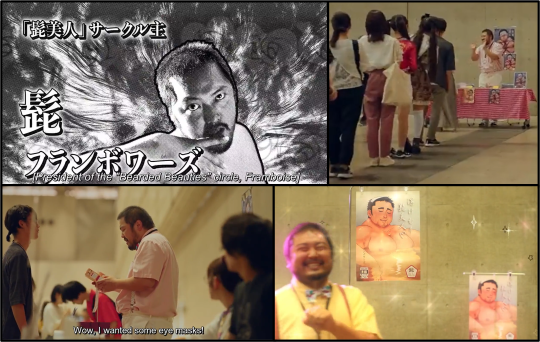
Framboise is the president of a doujin circle called Bearded Beauties. He is very popular. He is not only among the wall circles each time we see him, but also is showered with gifts by his fans. He acknowledges that he has been doujinshika for years. His art resembles him – body-type, facial hair, moe. He keeps inviting Nekoyashiki warmly to a gathering of muscle BL artists despite getting turned down. His interactions with Nekoyashiki are precious.
Takkun is Nekoyashiki’s fan. He is inspired by Nekoyashiki and worked hard to establish himself as a wall circle doujinshika.

His rise from a consumer to producer of doujin and finally a wall circle doujinshika mirror's Nekoyashiki’s journey. Moreover, his rise is contrasted with Nekoyashiki’s fall.
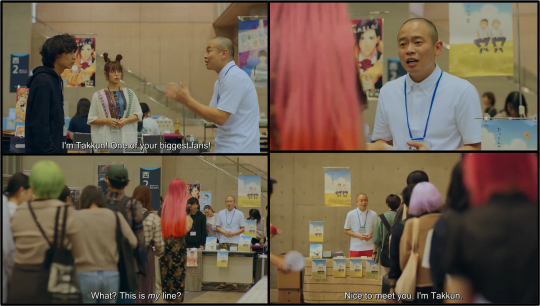
Also, one of two characters on his doujin cover looks a lot like him.
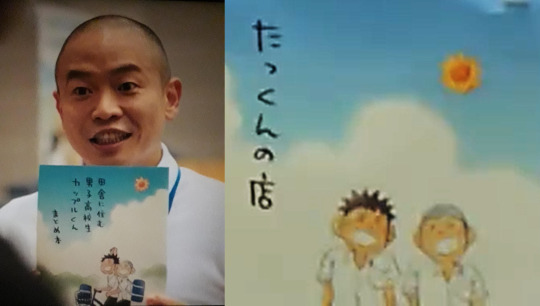
Unlike Framboise and Takkun who draw what they like, Nekoyashiki draws to be recognized.
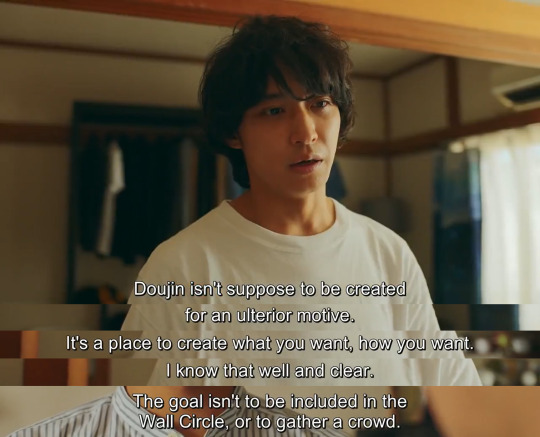
Nekoyashiki draws a second season to his previous work Please Suck on my Enormous, Manly Tits. Despite Yamada’s best hopes, it is not popular at all and loses Nekoyashiki his position as a wall circle doujinshika. He bids goodbye to Suck My Manly Tits series and to ero-manga sub-genre in general.
In a desperate attempt to climb back into popularity, he tries classic BL pairing. We get to see him reading commercial BL as a part of his research. This is an obvious mistake. Yamada wants to intervene but hesitates and ultimately gives up.
When his next doujin, My Perfect Boss Became My Perfect Spouse, also flops, he loses his resolve to be a mangaka.
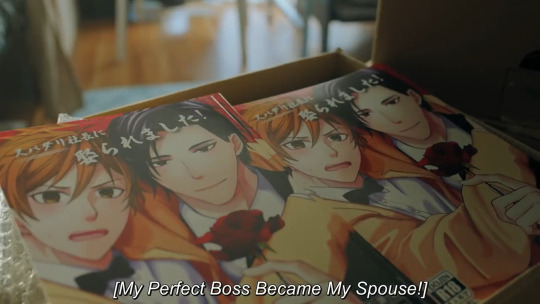
Yamada asks Nekoyashiki to be more honest and expressive in his creation.
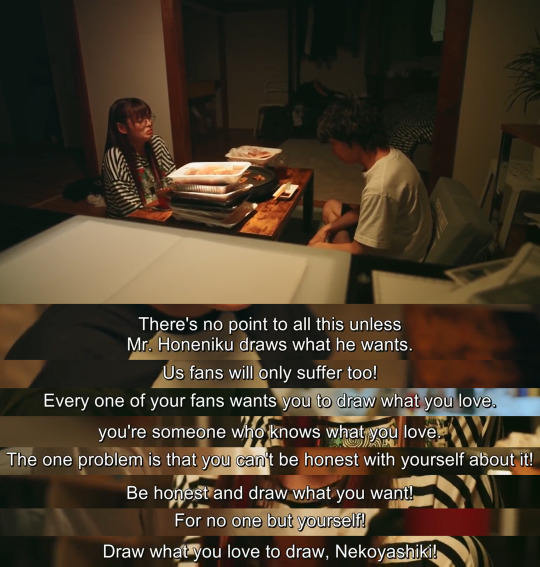
In the end, Nekoyashiki creates a doujin inspired by his own relationship and aspirations – a work that, Framboise and Yamada notices, is to Nekoyashiki’s satisfaction.
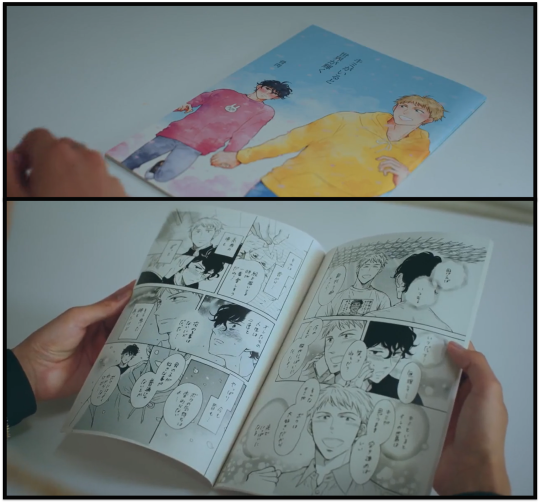
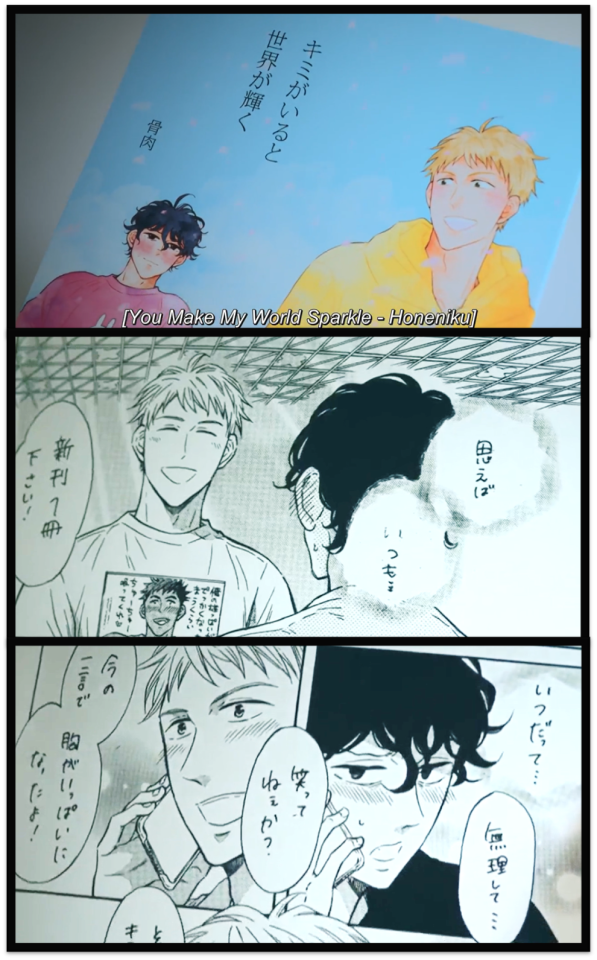
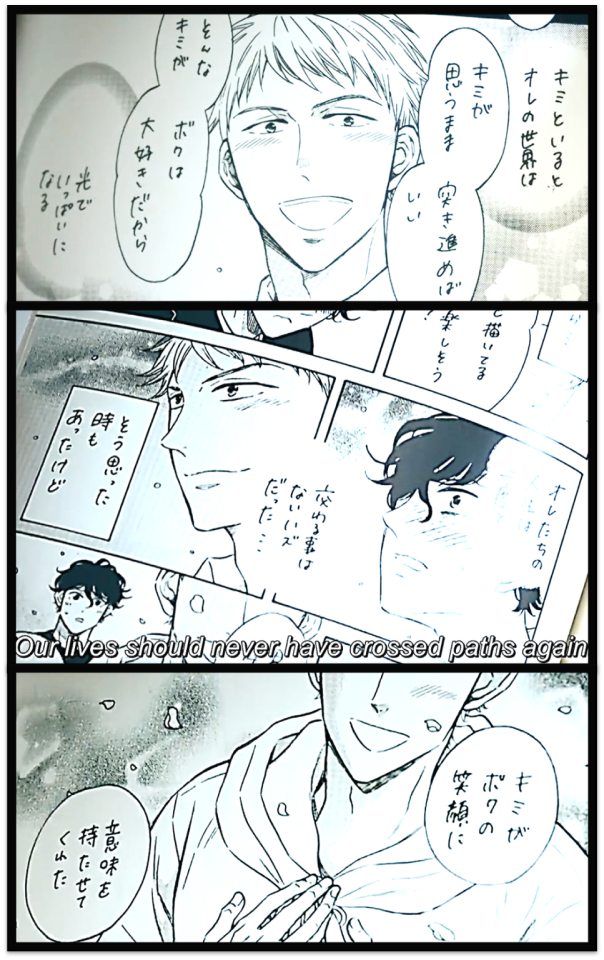

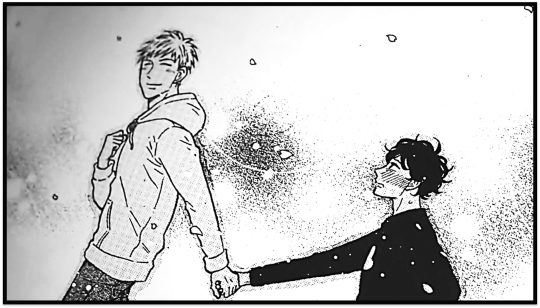
It is common for at least some characters by male BL and gei comi mangakas (who have revealed themselves) to look at least a little bit like themselves. To see examples, check out the beginning of Massive: Gay Erotic Manga and the Men Who Make It where representative art and artists are placed side by side. Some even acknowledge this. e.g. Chinese BL manhuajia Liang Azha once commented on how his shou (uke) tend to look like him as he is today and his gong (seme) resemble his looks from his college days. Moreover, art tend to inspire clothing, haircuts, and other features which in turn inspire art. The influence Tom of Finland had on androphilic men of his days and they on him is discussed in his 2017 biopic. Similarly, mangakas are influenced by their senpais in the field and sometimes it is noticeable in their art too. e.g. Gengoroh Tagame’s historical works looks quite a bit like those of Go Mishima.
Other BL doujinshika in Live-action BL
Yoh from Taikan Yoho (2023) creates his first BL doujin, inspired by his ikemen boyfriend and their relationship, in collaboration with his mangaka friend Manju after his career as commercial mangaka of straight ero-manga takes a nose-dive.
BL Metamorphosis (2022) depicted the process of BL doujin creation in detail as the main character, Sayama Urara, embarks on that journey. Her friends offer her support, especially Ichinoi Yuki who funds the printing and binding. Sayama Urara doesn’t debut as doujinshika as she doesn’t set up her booth at the convention. However, one of the copies lands in the hand of one of her favorite authors Komeda Yu whose commercial BL work Kimi no Koto dake Miteitai was what brought Sayama Urara and Ichinoi Yuki together.
Komeda Yu on the other hand is a doujinshika turned commercial BL mangaka. She visits the convention in hopes of overcoming writer’s block and to rediscover her passion for drawing. She is motivated by the doujin that Sayama Urara created and emerges out of slump to continue with her series.
Fudanshi Bartender no Tashinami (2022) revolves around Soichiro Hibiki, a fudanshi bartender moonlighting as a BL doujinshika, who draws inspiration from his customers and fellow bar staff to fuel his passion.
Minamoto Kazuki
While narrative drives home the point that the various pieces of art we see are works of respective doujinshika characters through haircuts and body types, the fact remains that most of those are actual doujin by Minamoto Kazuki aka MELU. He belongs to the circle: GOOD BYE LIFE.
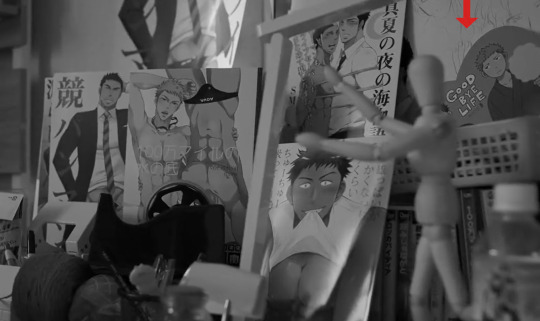
In case anyone want to read them, here are the links:
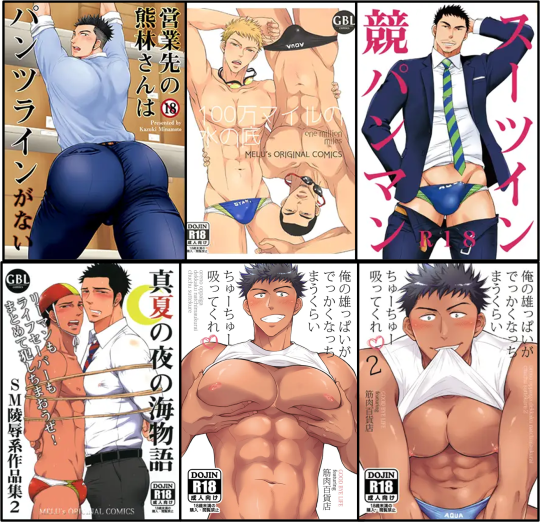
Kumabayashi at Work Has Not Underwear Line
One Million Miles: The Complete Collection
Competition Swimming Brief in Suit Man
A Midsummer Night's Beach Story: SM Assault Works 2
Suck My Manly Tits manga: 俺の雄っぱいがでっかくなっちまうくらいちゅーちゅー吸ってくれ
俺の雄っぱいがでっかくなっちまうくらいちゅーちゅー吸ってくれ2
"Suck My Manly Tits" doujin is in its 3rd season: 俺の雄っぱいがでっかくなっちまうくらいちゅーちゅー吸ってくれ3
Autobiographical pieces that didn't figure prominently:
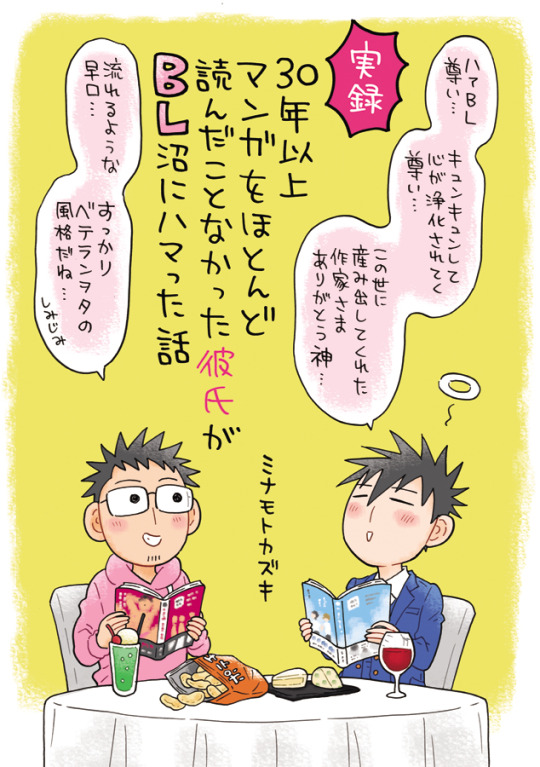
30年以上マンガをほとんど読んだことなかった彼氏がBL沼にハマった話 (A story about how my boyfriend, who has barely read manga for over 30 years, got addicted to BL swamp.)
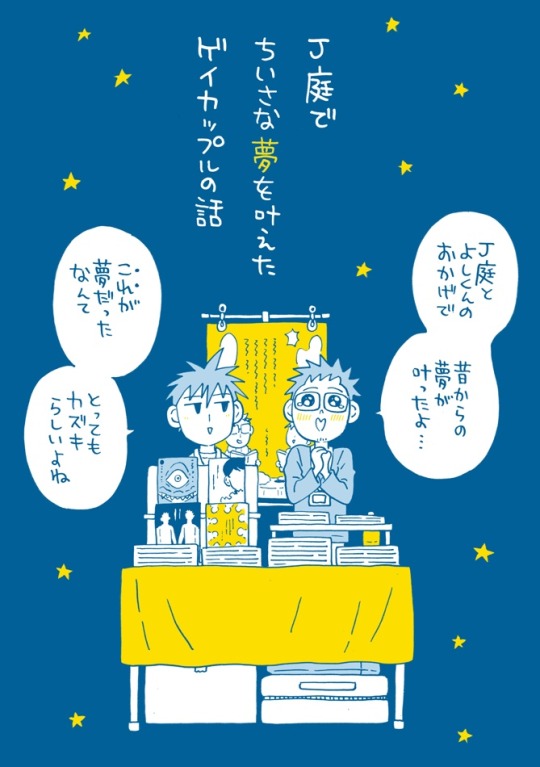
J庭でちいさな夢を叶えたゲイカップルの話 : Story of a gay mangaka and his boyfriend who participated in J.GARDEN, and their little dream that came true.
The cover of this doujin got live-action adaptation in one scene that one would miss if not looking closely:
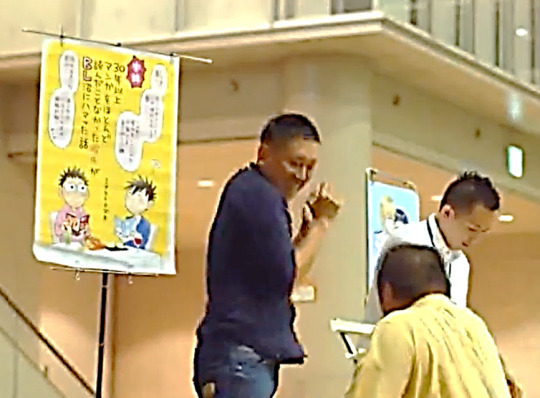
Other interesting works by Minamoto Kazuki
Autobiographical: Shōjo Mangaka no Minamoto-san ga Kaminguauto Shimasu.
2. Those with English translation:
The Midnight Association for The Broken Hearted
The salaryman who has a fetish for suit gets horny.
The Gay Who Turned Kaiju
3. Essay-manga about doujin-making
夜寝てる間にBL原稿のお手伝いをしてくれる妖精さんがいた話
BL同人原稿(アナログ18禁!!)を東京から大阪の印刷所まで届けてくれた彼氏の話
4. About Kabe Koji (2022) live-action:
自分が原作の実写ドラマの大ファンになってしまったので原作者自らヲタ活をしています。
自分が原作の実写BLドラマをリアタイしたくて大阪へ行ってきました。
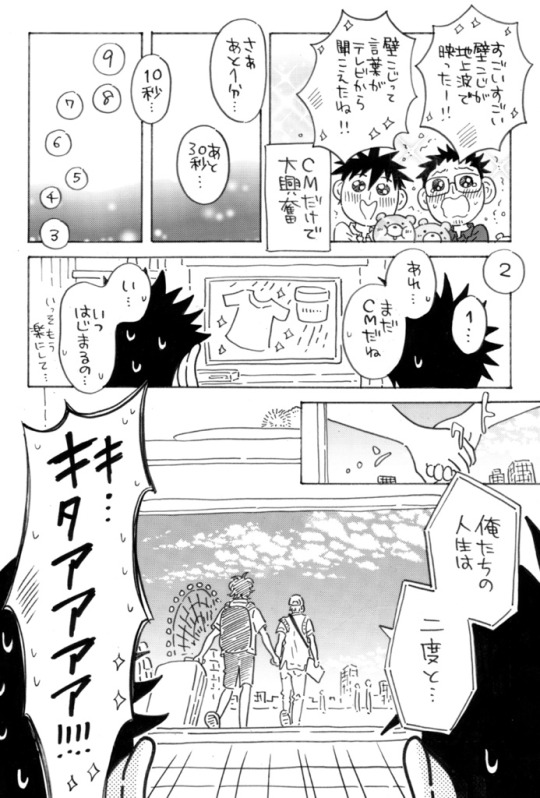
___
This is dedicated to @bengiyo and @liyazaki for gifs featuring Framboise. Thank you very much. While I was trying my hand at a review for One Room Angel (2023) and wanted to express my disappointment at the lean ikemen casting for Kouki’s role, I got an opportunity to use those gifs. I really wish someone would create some gifs for SHIMBASHI TUGBOAT content too.
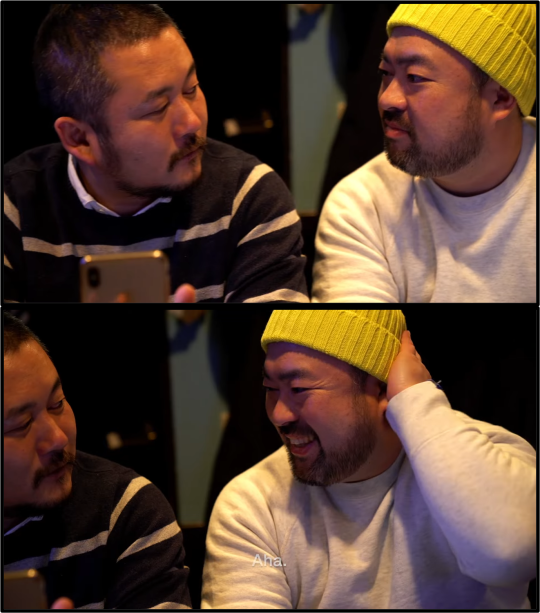
(Especially this scene.)
For someone who is as much a fan of “tribes” as BenZi, I would not mind playing the 9Monster live-action BL bingo version.

112 notes
·
View notes
Text
BL and it’s Shoujo grandma
In the last few years a lot of people have entered the fandom from different pathways and don’t know its history and origins. This post is an effort to clarify some of the whys and the hows of how the genre and industry came to be in the way they have. In this post I want to talk about BL and its connection to Shoujo manga through their tropes.
We all know to some degree (and if you don’t you will now) that BL came from the more traditional romance manga genre: Shoujo.
Today, BL is its own independent genre, so many people might not know that a lot of what is characteristic of BL, is an evolution or a trace from its Shoujo grandmother. After all, romance is romance, and our hearts flutter very easily with the same tropes over and over again.
We must also take into consideration that everything in this life influences each other so the limits between genres will never be cristal clear. There is no clear line between Shoujo and BL... but the ambiguity is part of the charm.
Please be remiended that this is my own thoughts on the matter. It’s a hypothesis I have come up with based on my readings but do not take it as gospel. Anyone and everyone is welcome to add to this post and correct any errors, or comment their own takes on the topic.
Edit: this got so long I’m gonna put it under the cut
Shoujo, as the Romance Manga Genre by definiton, comes from Japan. Even though it is not the only source of romance content, I believe that it has had one of the biggest influences over the mainstream asian romance media. Which, I believe, has a lot to do with the recent history of the region.
First, a little bit of history and context (and some speculation)
The after effects of WW2
Well, Japan’s imperialism and war against the west makes it occupy a big part of the countries of southeast asia and “during this period, GDP in most Southeast Asian countries fell by half; 4.4 million civilians died prematurely; severe shortages of food and goods affected almost all Southeast Asians; and many lived in fear of draconian military rule” ( World War II and Southeast Asia Economy and Society under Japanese Occupation, by Gregg Huff) yes this post has citations people
Overall, Southeast Asia faces economic difficulties, social and ethnic unrest, and political struggles through much of the mid-twentieth century. By the 1980s, conditions have improved, but the “Asian financial crisis” in the late 1990s is a serious setback for the region (source)
All of this to say, that it makes sense that, in such a landscape, it was Japan who, after the American Occupation was the one country with the means to produce and eventually export entertainment. The US wanted to successfuly avoid any resurgance of imperialism and a base in the east on their side for the cold war, and other subsequent wars. This special attention helped the stability and economy of Japan in the long term (compared to all the other countries that had been under its rule).
Manga and Shoujo
More or less at the same time manga as we know it today started (with Osamu Tezuka, aka the god of manga) around the 50′s.
First made by men then by women around the 60′s, Shoujo was the genre “for girls” in opposition to Shounen, that was “for boys” (these labels just inform of the content and tropes of the stories you read, there are many other genres but I’m trying to make this short). Women authors took control of the stories that were being told to women audiencies, taking into account what interested them at the time: gender roles, sexuality and romance, among others.
To me, the most interesting time period for Shoujo after the initial 60′s/70′s (ie, The Rose of Versailles) is the 90′s/early 2000′s (ie, Sailor Moon, Magic Knight Rayearth, Ouran High School Host Club, etc... My favorite shoujo manga come from this time, really really recommend reading some). Which coincidentally happens around the same time as manga’s worldwide boom and expansion.
How has Shoujo influenced asian media?
The 80′s/90′s was when manga arrived to the US, and subsequently to the rest of the world. Depending on the country manga became popular at different times, however by the end of the 90′s it was a success worlwide.
references
Why I think shoujo manga has had one ot the biggest influences over romance media in Asia
Shoujo manga has been adapted into live action so, so much. Many memorable doramas were mangas first. Boys Over Flowers being the most prominent example of this (we will come back to it later).
Imo, Shoujo was able to explore a certain amount of themes that interested women at the time, and through manga’s popularity and expansion, those themes came with tropes and ended up becoming the backbone of the genre, influencing other romance media in general. But it has also been influenced by the mainstream trends of tv and interests of the public as it evolves according to the demand. The name does comes from its target demographic.
Some of the most typical themes we find in shoujo are:
Interpersonal relationships between characters concentrating on the interaction of their emotions and a lot of inner monologue, aka romance
Gender
Sexuality,
Fashion,
etc...
One of the interesting things here -- going back to the historical context I gave before -- is that Japan’s Constitution (1947), that was made which the US’s supervison, enabled a bigger equality between men and women. Which might be one of the reasons why “characters that defy traditional roles and stereotypes surrounding gender and sexuality have been a central motif of shōjo manga since its origins.”
General Romantic tropes we find in Shoujo
Romance being one of the main themes of Shoujo, it is inevitable that a lot of what we consider romantic will also be a Shoujo trope. Many of these are just inherent to any romantic theme. What influenced Shoujo or was influenced by Shoujo? It is hard to tell. Nevertheless, I will do my best to do some sort of categorization.
General romantic behaviour tropes: kabedon, accidental kiss, feed me, sucking on wound, temperature check, indirect kiss, lap pillow, shirt tug, hair kiss/touch, monster-in-law ...
Other tropes include, not limited to romance but pretty common: we got together kiss/sex, drunken acts, I can’t control myself/I’m a man too, overnight trip, miscomunication, physically hurt/sick moment where they get taken care of, ...
Here are some of the most typical shoujo tropes:

How many times have we seen a scene under the rain, where the use of an umbrella was made very romantic? Or an icy, emotionally closed off man being melted down by a warm woman’s love?
Others shoujo specific tropes: sponge bath, drying hair with a towel, snuff cheek kiss, indirect kiss, unconscious kiss, kiss them to make them take their medicine, bitchy girl rival (because mysoginy), violent defense of loved one, he belongs to everyone (mysoginy and girl rivalry again), accidental meet cute (library/street corner), gender bender, woman dressed up/mistaken as a man, ...
How many shows came to your head (queer or not) while you were reading that list of tropes? A lot of them you know or have seen many times in kdramas, jdramas, cdramas, thai dramas, etc... Probably some of them you didn’t know were a common trope.
Shoujo tropes refs 1
To exemplify the influence of Shoujo Manga on the Romance Media...
Let’s talk Boys Over Flower/ Hana Yori Dango/ Meteor Garden/ F4
Boys Over Flowers (or Hana Dan) is the best example to see the influence of Shoujo tropes in Asian romance, since it has been adapted many times, and is still being milked to this day.
Contrary to popular belief the taiwanese Meteor Garden did not come first, the manga did. Followed by: the japanese live action movie (1995) >> the anime (1996) >> taiwanese series (s1&2, 2001-2002) >> japanese series (s1&2 + movie, 2005) >> korean drama (2009) >> chinese Meteor Garden (2018) >> japanese spin off Hana Nochi Hare (2018) >> F4 (2021).
We find all the tropes in BOF:
love triangle, popular x unpopular, umbrella under the rain, cold ml x warm wl, rich x poor, trapped in an elevator, sick boy, accidental kiss, unfortunate accident that brings you closer, monster-in-law, I leave you because I love you, he belongs to everyone... and many others.
The overwhelming success of BOF, and it’s many reboots and adaptations made the shoujo tropes a staple of the romance genre (at least in Asia).
How does BL appear in all this?
Shoujo and gender and sexuality
BL (or Yaoi or Shounen-ai) started as one of the subgenres of Shoujo (others being Josei (more mature), Horror, Teen’s Love(erotica), Moe, etc). It was a variation on the hetero notion of romantic love, hence the clear paralelism with the gender binary. It slowly started integrating actual queer dynamics later on. The genre in itself has evolved a lot as it has broken free from the Shoujo mantle. It was very very different in the 70's (when it started) to the 2000's (when the hetero style of relationships and dynamics was at its most popular in QLs) to now.
The particular thing about Shoujo is that, besides creating a subgenre about exploring homsexuality, they explored gender and gender roles a lot. Women disguising themselves as men, or characters that did not identify with their assigned gender were and are still very common. Starting with Princess Knight to The Rose of Versailles to Ouran High School Host Club. We see this trope a lot in live action dramas like: Hana Kimi, Coffe Prince, Bromance, Secret Garden, You’re Beautiful, etc..., And all the historical k-dramas with women disguised as men (Sungkyunkwan Scandal, Scholar Who Walks the Night, Love in the Moonlight, The King’s Affection). Besides it being a theme that clearly interests female audiences, other possible influences on the growing of media exploring this theme might be: the Takarazuka Revue, the newfound equality of sexes thanks to the japanese constitution, and trying to break free of gender roles and societal expectations through media.
I kinda see it as an accident that shoujo manga authors ended up making queer content. They were questioning social expectations but I don't think they even knew that there were queer people out there to be appealed by it.
As a quick recap of BL themes through its history, we went from:
the tragic and traumatized european pretty boys (Kaze to Ki no Uta) of the 70′s to
the gay for you, hetero like uke/seme, with problematic content for the sake of drama but with happier endings (Junjou Romantica) of the 2000′s to
the more realistic, featuring characters from the LGBT community variety of content we have now (Given)
BL also eventually gave birth to Bara/Gei Comi (gay comics, by gay men for gay men. Check Gengoroh Tagame’s works to know what I mean), and in some way GL (or Yuri).
BL tropes
Do we find the general romantic tropes in BL? Yes, we do. However there are some that are inherent to BL. Also, as Thailand finds itself at the head of the current BL boom, we also find these tropes to be influenced by thai culture.
Bishonen boys (beautiful androginous men), uke/seme, rape, gay for you, age gap, psycho boys, ...
I leave here ABL’s posts on the BL characteristics by country, other bl tropes, and Thai BL and tropes. Honestly, they’re the expert on all tropes BL.
As I have consumed all types of romance media, I can hardly tell what tropes are inhenrent to what genre. However, tropes that are inherent to BL would be:
Many of these are related to sex, which is one of the main themes of BL. There is a lot to be said about sex in BL, particularly in its relationship to violence. There is also a lot of BL that features intentionally toxic relationships and unhealty dynamics. Which is the darked side of the genre, to be explored in another occasion.
Coming back to our main theme, here is an example of the connection and evolution of a shoujo trope into a BL tropes.
BL tropes evolved from Shoujo: Rooftop confession

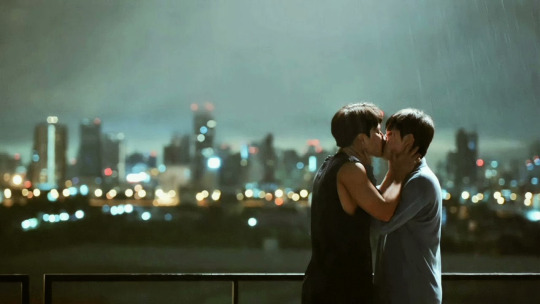
Rooftops belong to the gays now and it should be known. It is a very well known trope used all over genres, but it is has become an very significative one in BLs.
image sources 1 2
Final Toughts
While preparing for this post I decided to research a little about SE Asia’s recent history, as I have been made aware recently that not only thailand is rising in it’s entertaiment production, but Cambodia is rising in the music sphere. All these industries that are sprouting from Southeast Asia, made me wonder why. And my elation when I realized there was a reason why! It all started to get into place in my head.
I have wanted to make this post for a while. In a lot of the conversations we’ve been having in the fandom around shows recently made me realize that a lot of the new fans get into BL without having encountered Asian dramas before or just partially. Lots of the analysis made and the questions posed around BL shows have a partial answer in the context of how the genre came to be and how its intertwined with every other piece of Asian media.
The purpose of this post is to give more detail into how BL is influenced by a lot of the general romance genre, which a lot of the fandom might not know in depth. I hope this clearifies some things for those who search to understand why this or that trope or action happen in a show where it might not make sense, or it might be out of place, or just strange.
As Thailand media is growing, we see how they use what is popular in their favor, while adding a bit of their own personal culture to it. It’s interesting how we can see the kdrama or manga influences. And talking about it and questioning them makes me excited for more.
This will be a series of posts. I have decided to make a post about the general history of BL. Which will be accompanied by another, smaller post where I want to talk about the Yaoi Debates (Yaoi Ronso) and the use of trauma and rape in BLs, as it has been a topic of conversation recently.
A big thank you to @waitmyturtles for her Old GMMTV Challenge, which has promted a lot of conversation about BL and has also made me want to participate in them. I hope this can be complementary to your watches and helps you understand the genre and how it came to be.
#bl tropes#shoujo tropes#bl and it's shoujo grandma#for the fam#and the besties#it got super long but if you read the whole thing I hope you enjoyed it#look forward to the other posts I'm gonna make#bl history
120 notes
·
View notes
Text
Mix Sahaphap gets to perform (and has the performance chops to perform) in a style that I’ve never seen any other male actor get to embody. Mix gets to unironically play the #strongfemalecharacter. The Beatrice, the Elizabeth Bennett, the Jo March. Strong-willed, emotional, kind-hearted.
Not only do the plot points line up, but Mix, more than any BL actor I’ve seen, fully leans into the embodiment of this archetype. In his roles, he rolls his eyes, pouts, banters flirtatiously, softens his posture and expression at small details. He doesn’t over-exaggerate and imposition other characters but his face also doesn’t hold back his character’s thoughts and judgments. And when the moments arrive, he lets all the hurt and anguish pour out in shatters of tears and visible heartbreak—the star-counting scene, anyone????—in a way that harkens to the operatic emotionality of well-done melodramas, soap-operas, and their contemporary Thai equivalent of Lakorn. It’s only that these have never been men’s roles in those.

It’s no surprise that one of Mix’s roles—Cupid’s Last Wish—is explicitly a gender body-swap, and Tian in A Tale of Thousand Stars is (albeit explicitly denied within the show) heavily connected to gender body-swapping. What Mix specializes in as an actor, and does exceptionally well, has been defined as feminine. To depict a kind of queer expression in this style is novel because it’s not camp, it’s not okama, it’s not a soft or femboy, it’s not a BL twink (Mix has been mostly excluded from the schoolyards and quads of the BL universe except for a role as a senior crush in Fish Upon the Sky). It’s too sincere and too adult for any of that.

In Moonlight Chicken we get to see, without the pretense of gendered mysticism, this performance style’s seduction, warmth, wit, and explosiveness within the framework of a general gay form of expression. It says that this kind of femininity might just be a gay thing. Not all gay men exhibit it, obviously—queer men aren’t a monolith. Still, it gives us something to consider about how we observe performance of queerness on screen, especially in front of an audience that puts so much more emphasis on ships, heat, and pairing chemistry to assess how well they perform a BL role. Could we look for other features to judge performance of queerness instead of how well they kiss?
Seme and uke roles would be the major performance style categories loyal BL fans assess actors with, yet even within the archetype his character’s fill within BL narratives, Mix’s performances differ from the typical uke depiction in BL because he really doesn’t perform them as passive. Rather, Mix’s characters and his portrayal of them are dynamic and demanding. It certainly fits certain stereotypes of ukes (Gilbert!) and their gay stereotype equivalent of bottoms as pillow princesses and brats. Mix’s characters, though, have more drive, agency, and compassion than that, and he plays them with all of those currents running underneath.

We certainly have openly gay writer/director Aof Noppharnach to thank for writing this kind of queer character for Mix to play in Tian and Wen. But for Mix’s specific commitment to the performance starting off with his (debut!?) role in ATOTS, we first have Earth to thank for believing in Mix’s ability and recommending him to portray the role of Tian, and then Aof’s acceptance despite his differing initial expectations for the character. Mix, Earth, and Aof have all been open about how Mix in his personal life and nature holds a lot of similarities to both his role as Tian in ATOTS and Wen in Moonlight Chicken. Some people might knock points off his performances because he’s like them. But his relationship to the characters, rather than dampening my enthusiasm for Mix’s performances, helps me appreciate his willingness to give an authentic performance in a style that hasn’t been encouraged on screens previously. It’s made more impactful that he chose to risk vulnerability to bring something personal that had previously been excluded from screens because of its gender deviance (and in broader society explicitly condemned). This doesn’t make a claim on Mix’s actual identity, but simply shows his willingness to understand and perform the expressions of his queer characters with an effort at empathy that many other actors would feel challenged to bring.
Some actors are chameleons, but some actors have a gift of a type within which they can explore depths and range that no one else can best. For me, that’s what Mix does in his work when directors and casting understands his talent. There’s a BTS video of Mix actually fainting during a scene while in Earth/Phupa’s embrace on the mountain that immediately brought to mind the wildly famous final scene in the film Camille where Greta Garbo as Marguerite dies in her lover’s arms.

For Mix, it was a serious incident due to regrettably extreme conditions and requiring the on-set paramedics, but these levels of theatrics, for me, are emblematic of what Mix is capable of as a performer, as well. After all, he had to faint in Phupa’s arms multiple times on purpose. It’s the kinds of Old Hollywood and heightened sentimental romance realms Mix takes his performances to! Then he can turn around and make it look easy to take that same character into grounded quips or dedicated everyday tasks. It only takes writers, directors, and audiences willing to see that men can feel this way and act this way. Mix has paved the way.

#mix sahaphap#earthmix#atots#moonlight chicken#cupid’s last wish#mlc#ossan’s love th#futs#fish upon the sky#ofts#Thai bl#queer history#queer performance#there’s a reason Mix can walk into the last five second of only friends and make such an impact#again I’m soglad to see more exploration of different queer embodiments in bls#but mix specifically changed my life#moonlight chicken was my second series after only friends#and I had just never seen a gay character in any media get to act like that with such earnestness#it was the first time I felt like I saw myself on screen#the jungle the series
810 notes
·
View notes
Photo
Adaptation of Hagio Moto's The Heart of Thomas.
Since The Heart of Thomas is one of the progenitor shonen ai, Shusuke Kaneko's 1988 movie 『1999年の夏休み』 Summer Vacation 1999 is arguably first ever live action BL.
It has been recently restored.

Don't know if this is a spoiler…
… Summer Vacation 1999 has an all girls main cast playing schoolboys.








Summer Vacation 1999 (1988), Shusuke Kaneko
#summer vacation 1999#japanese bl#shonen ai#jbl#bl meta#ql meta#japan bl#bl japan#shoujo manga#bl history#bl trivia#asian bl series#asianlgbtqdramas#asian lgbtq dramas#The Heart of Thomas#moto hagio#70s manga#Summer Vacation 1999#hagio moto
232 notes
·
View notes
Text




bison, probably: but ain't you gay?
FIRST KANAPHAN as KANT PATTANAWAT, KHAOTUNG THANAWAT as BISON and PARN THANAPORN as LILY episode 5 & 10 of THE HEART KILLERS
#the heart killers#the heart killers the series#first kanaphan#khaotung thanawat#firstkhao#firstkhaotung#kantbison#long post#gmmtv series#gmmtv bl#thai bl#mlm#thkedit#th: the heart killers#bibi gifs#userrlana#tusermona#tuserhidden#tuserrowan#tbh when this scene came up i only thought well he has a preference for men (with his history with bison and james)#and also bc that criminal record saying he was married (?) from ep 1 still hung in my head#but then in of jojo didn't shy away from saying sand and freddie mercury guy were bi#which makes me believe that if kant was bi as i thought was the case for the past 10 episodes he would have said i like both#like sand did#therefore canon gay kant
312 notes
·
View notes
Text







#trapped5yearfest#jackzhaozi#jack/zhaozi#history trapped#history 3 trapped#history 3: trapped#kenny cheng#andy bian#taiwan bl#asianlgbtqdramas
261 notes
·
View notes
Text
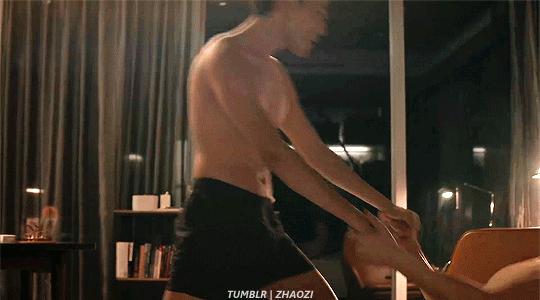




history 3: trapped rewatch - day 5 - love or favourtite kiss scene(s)
207 notes
·
View notes



